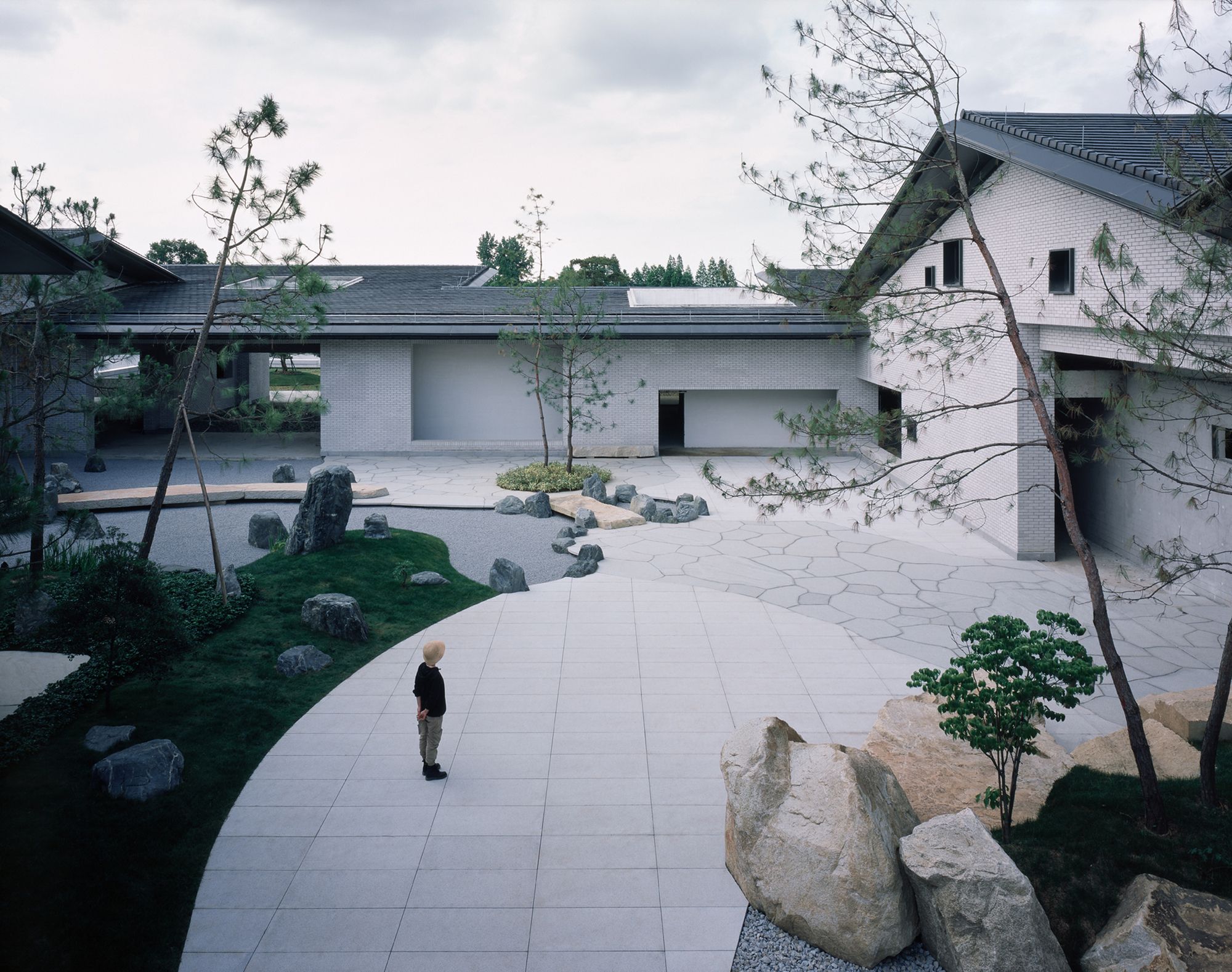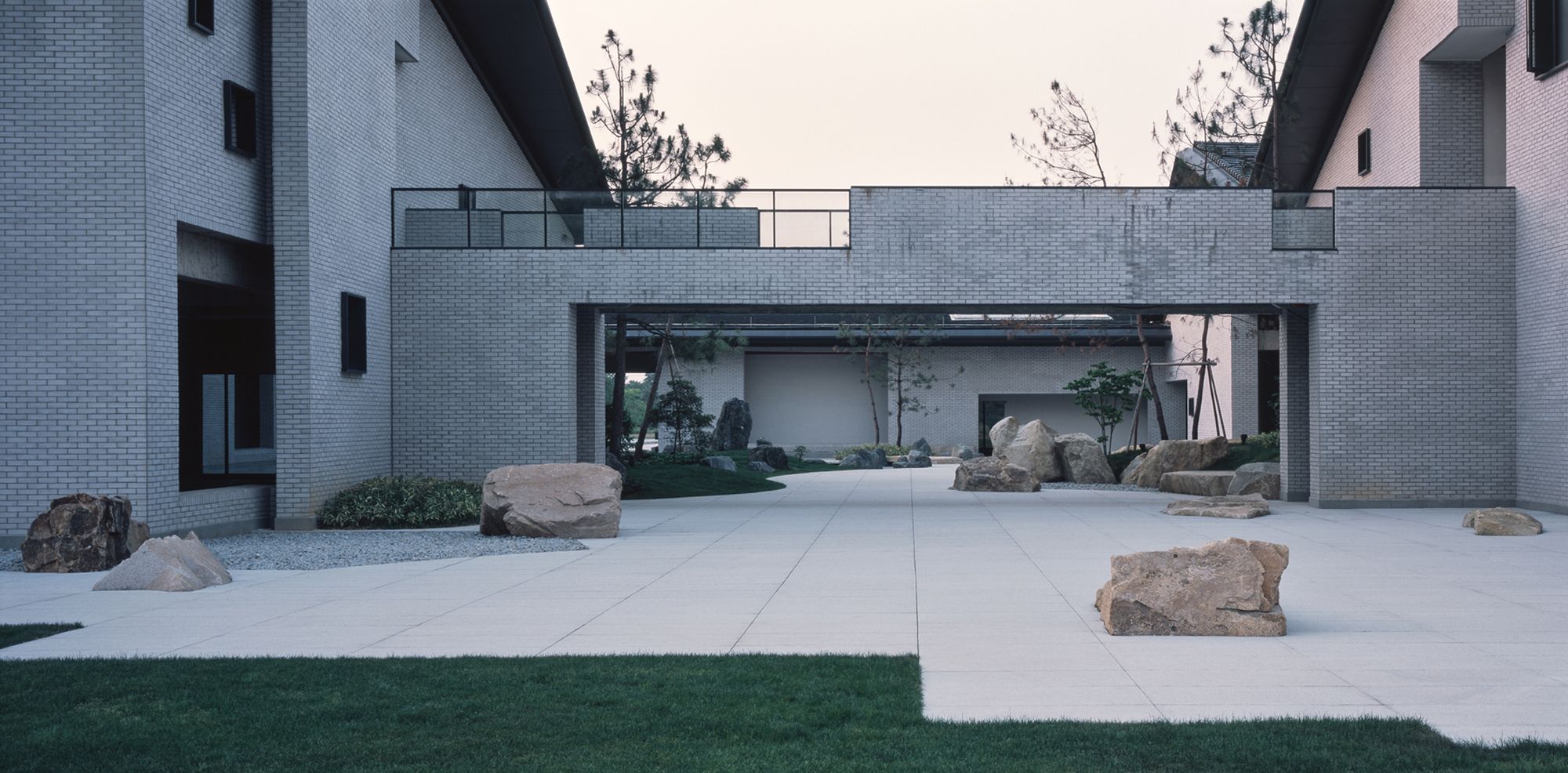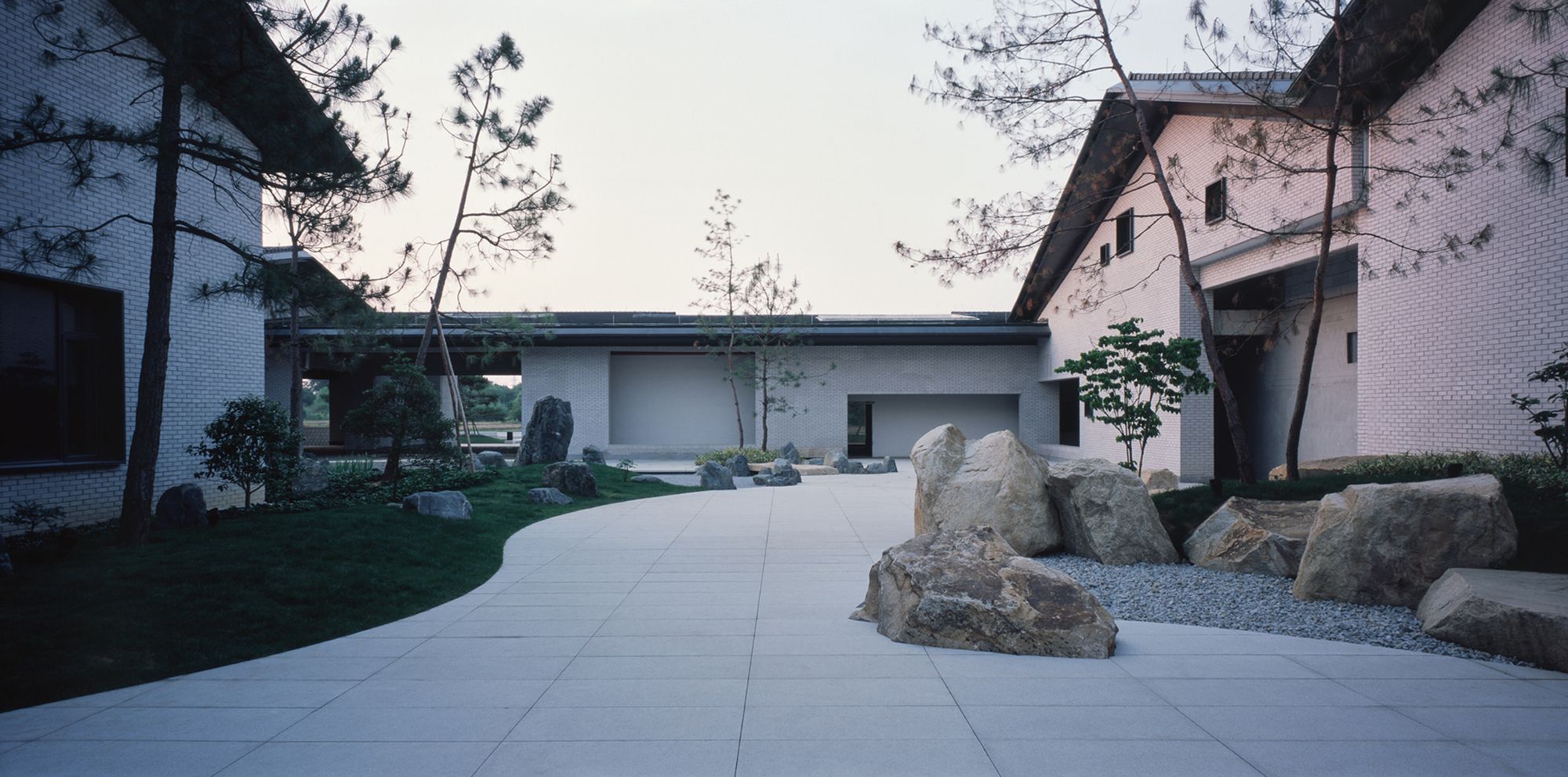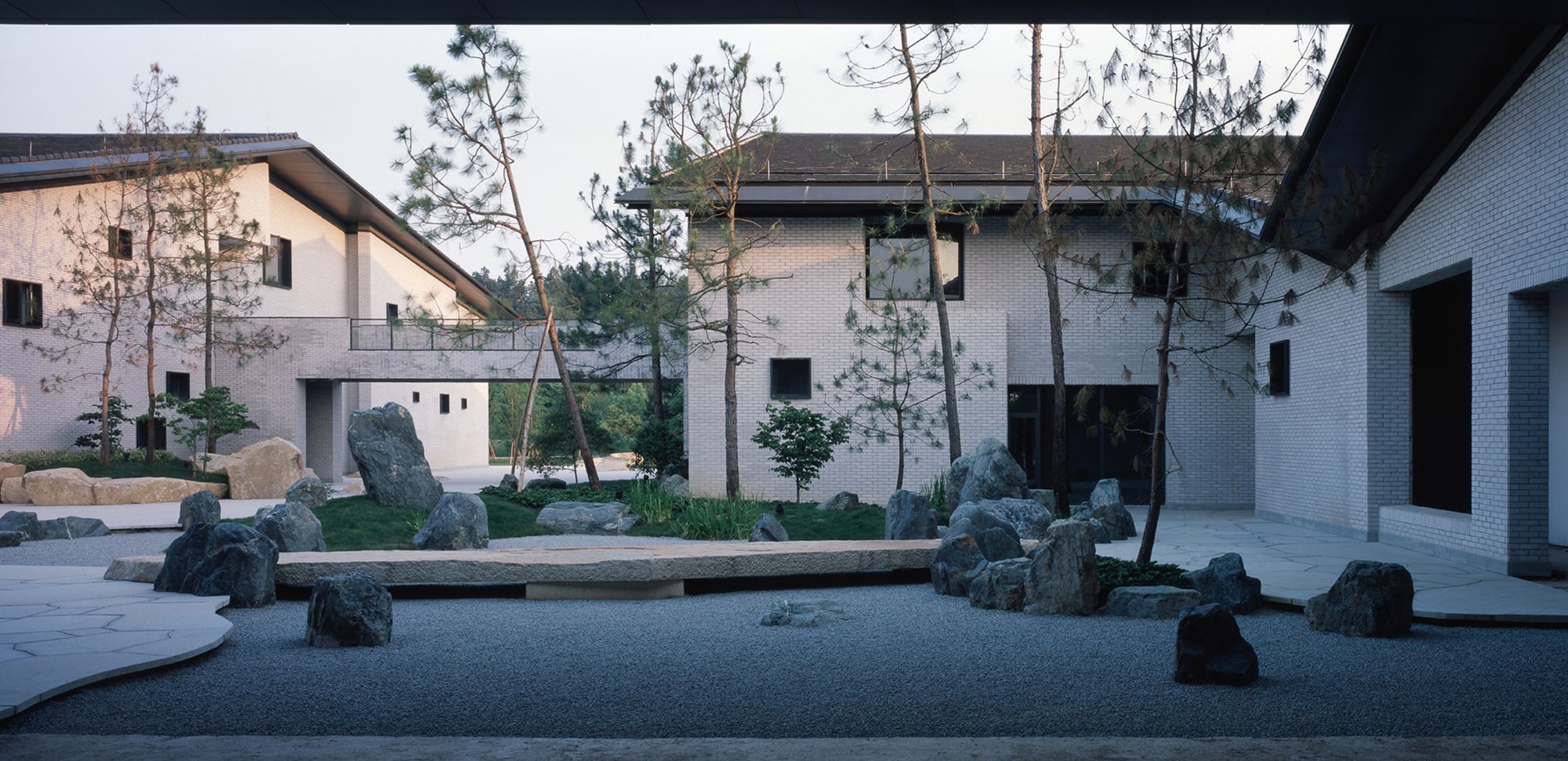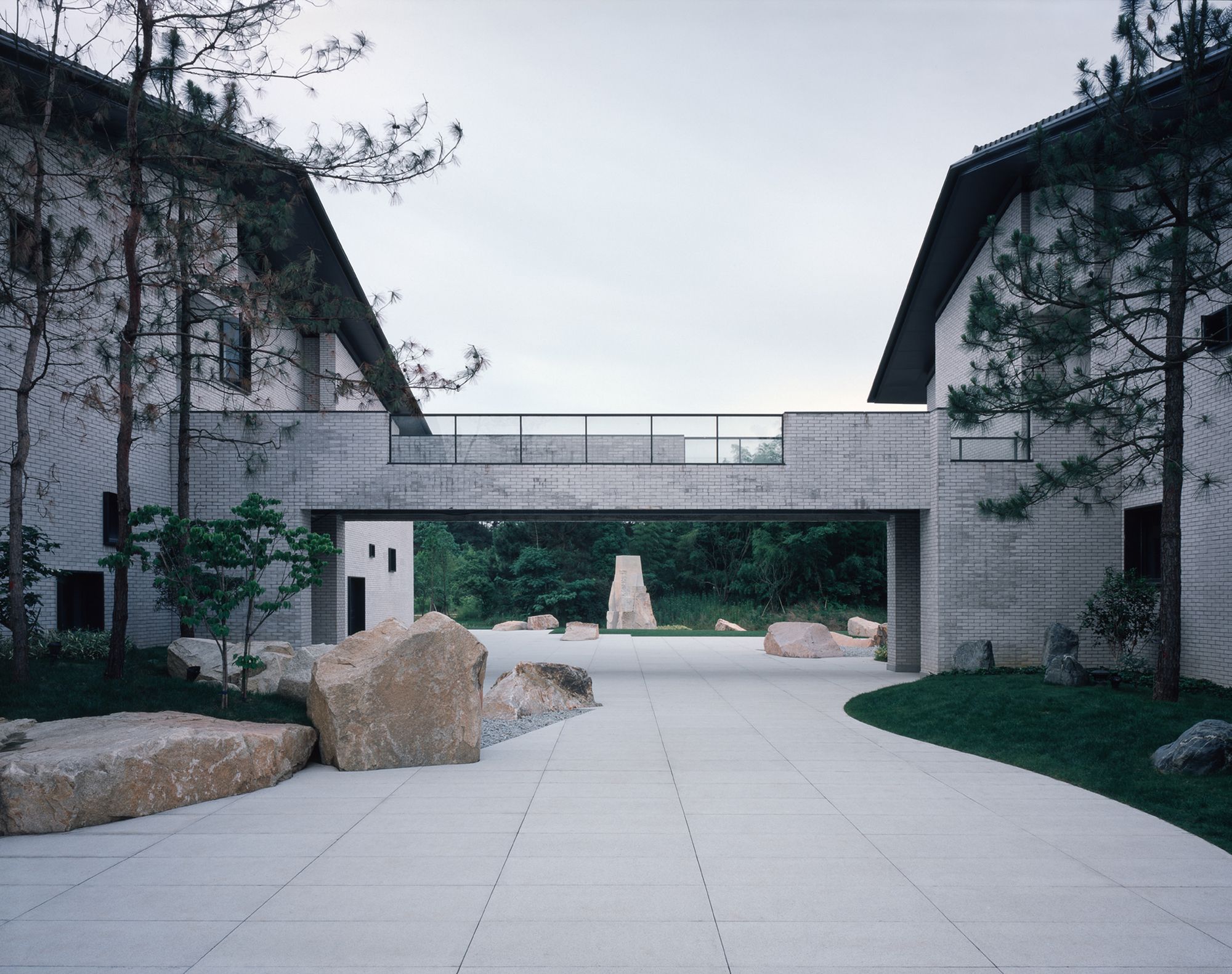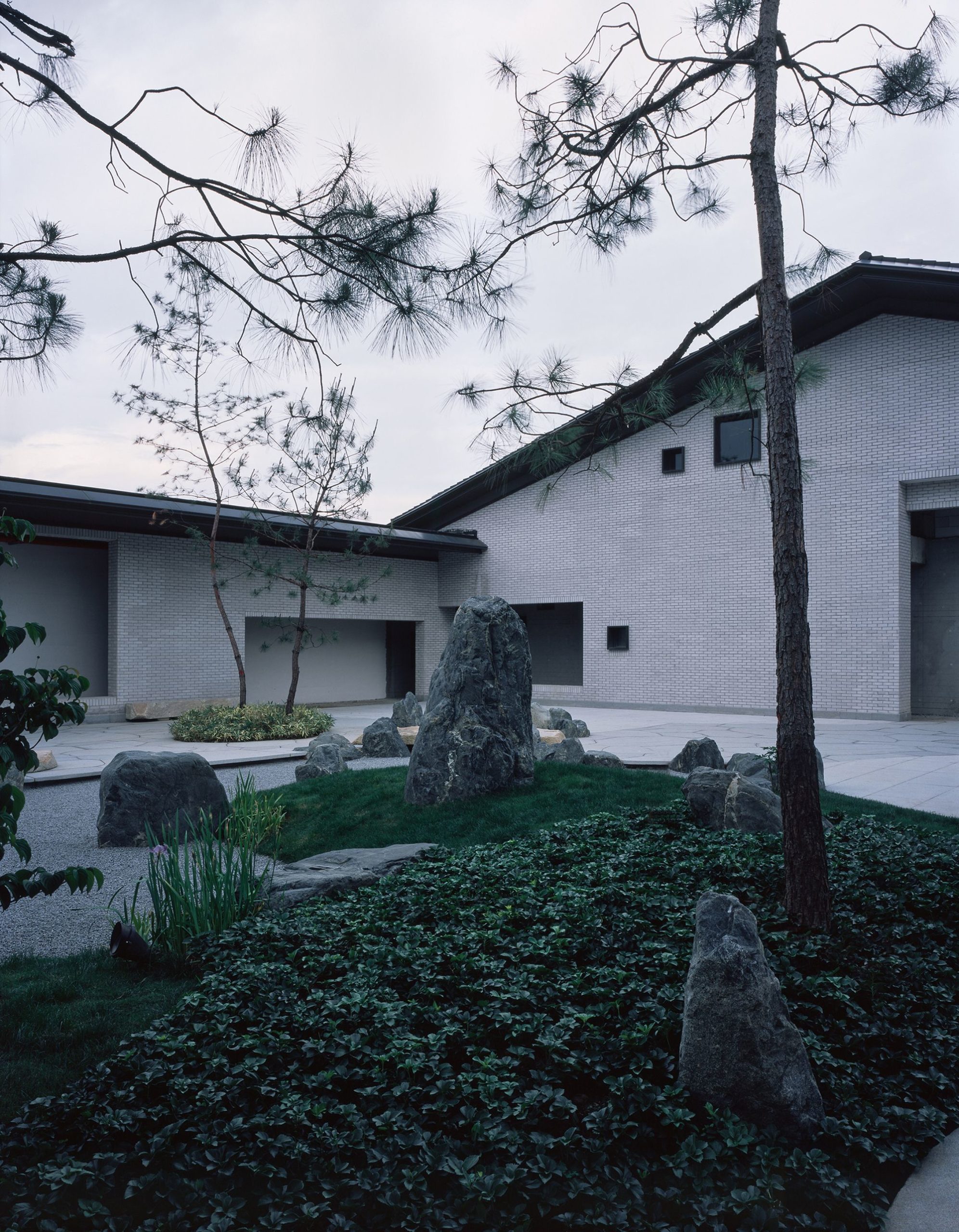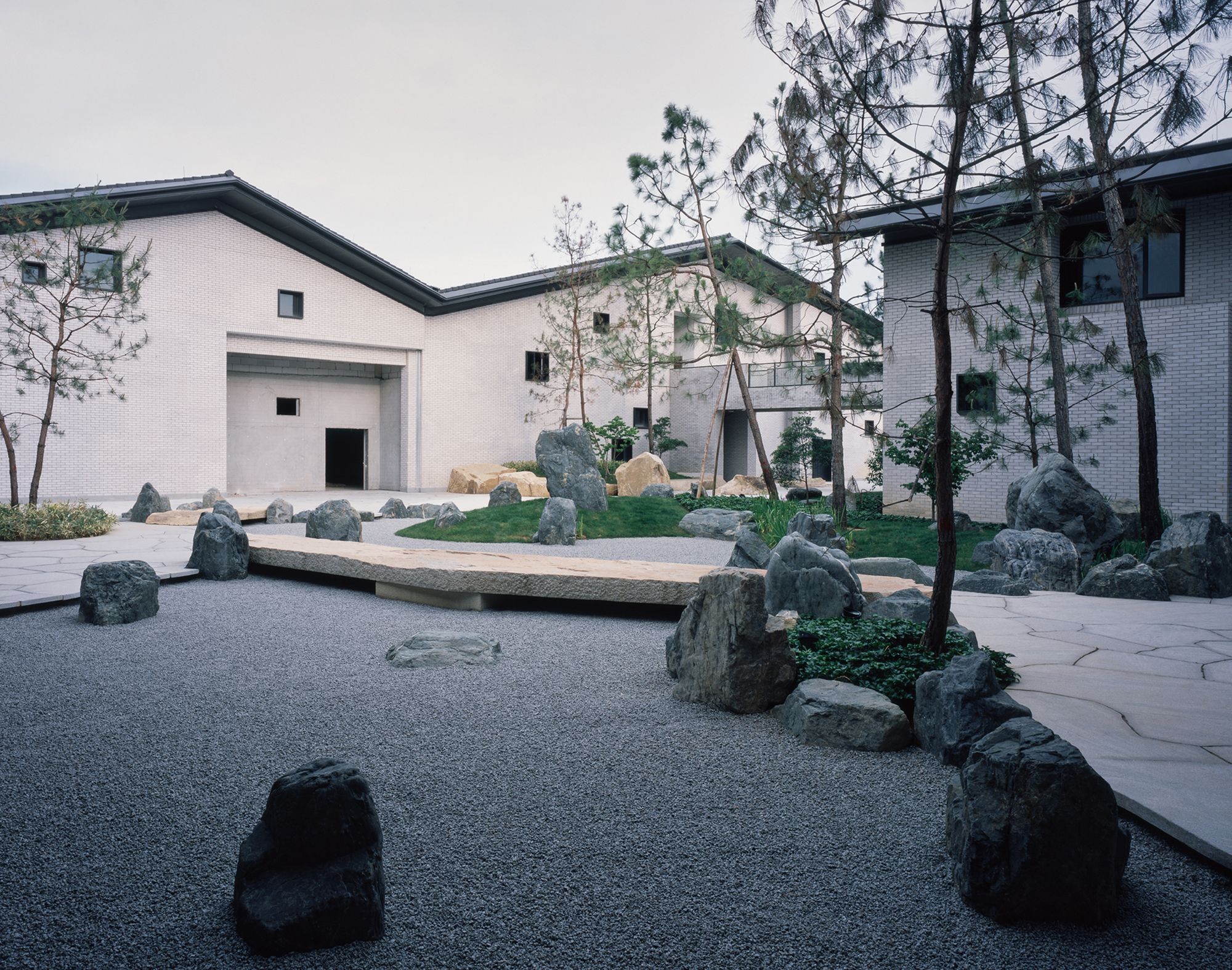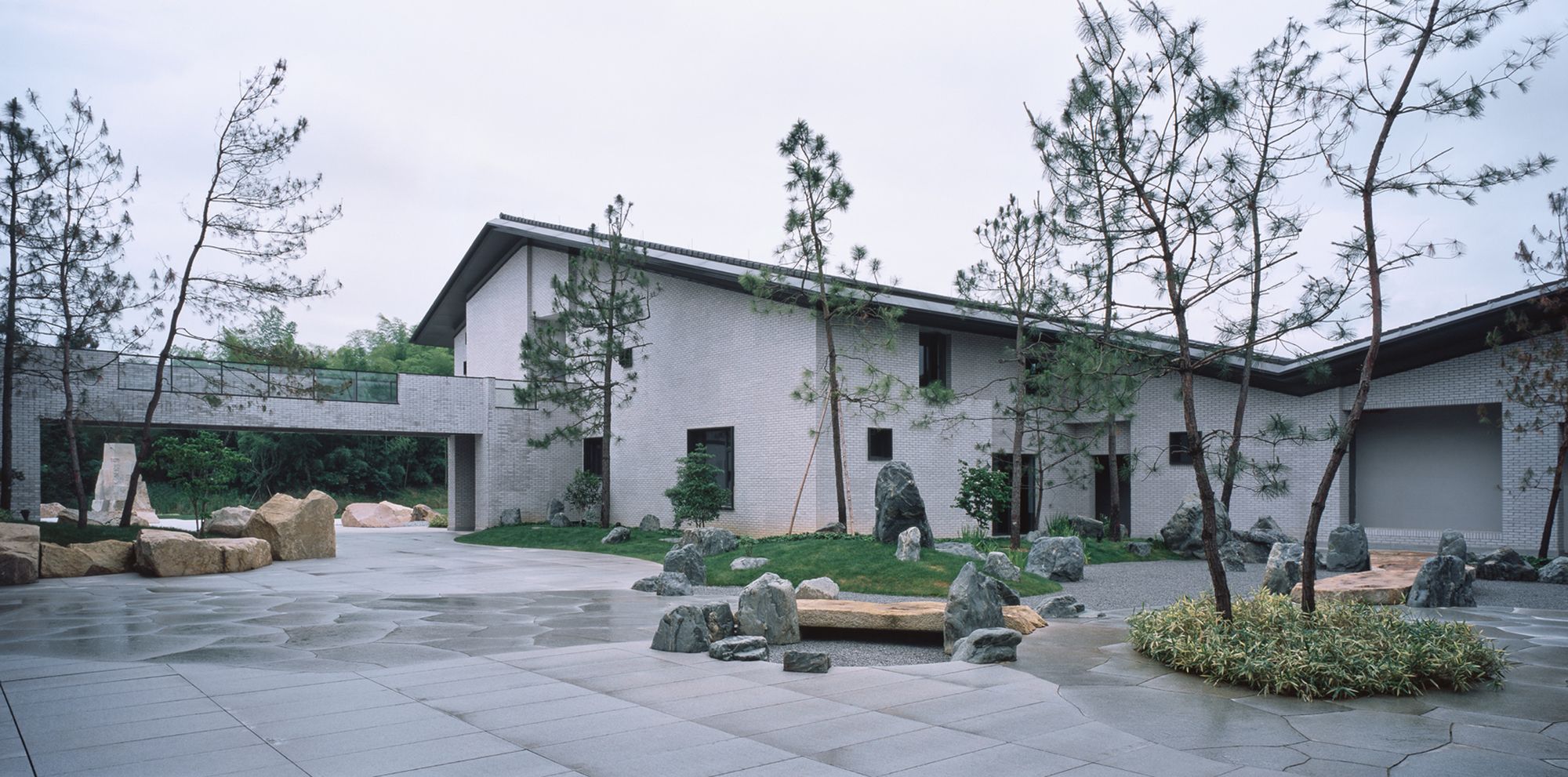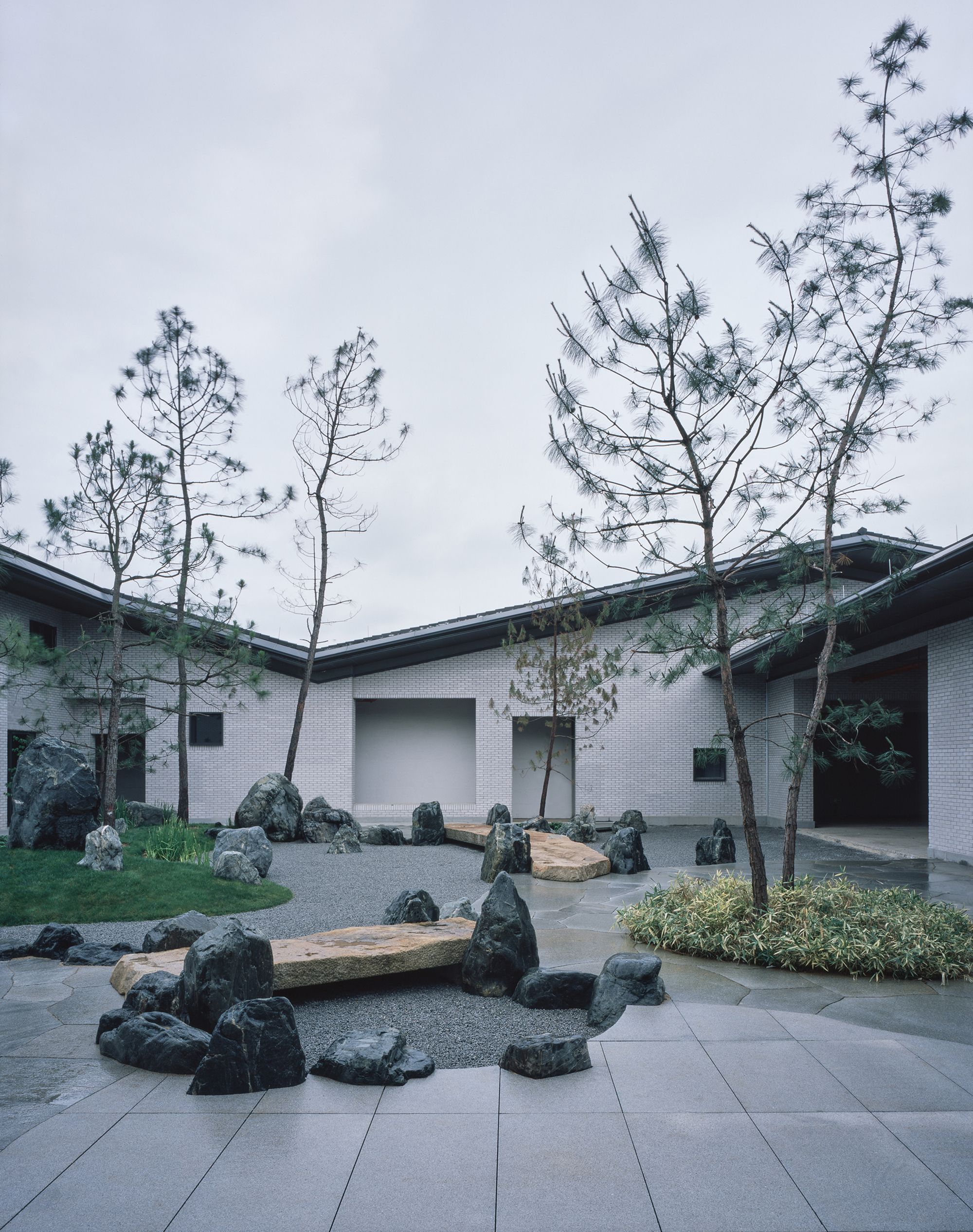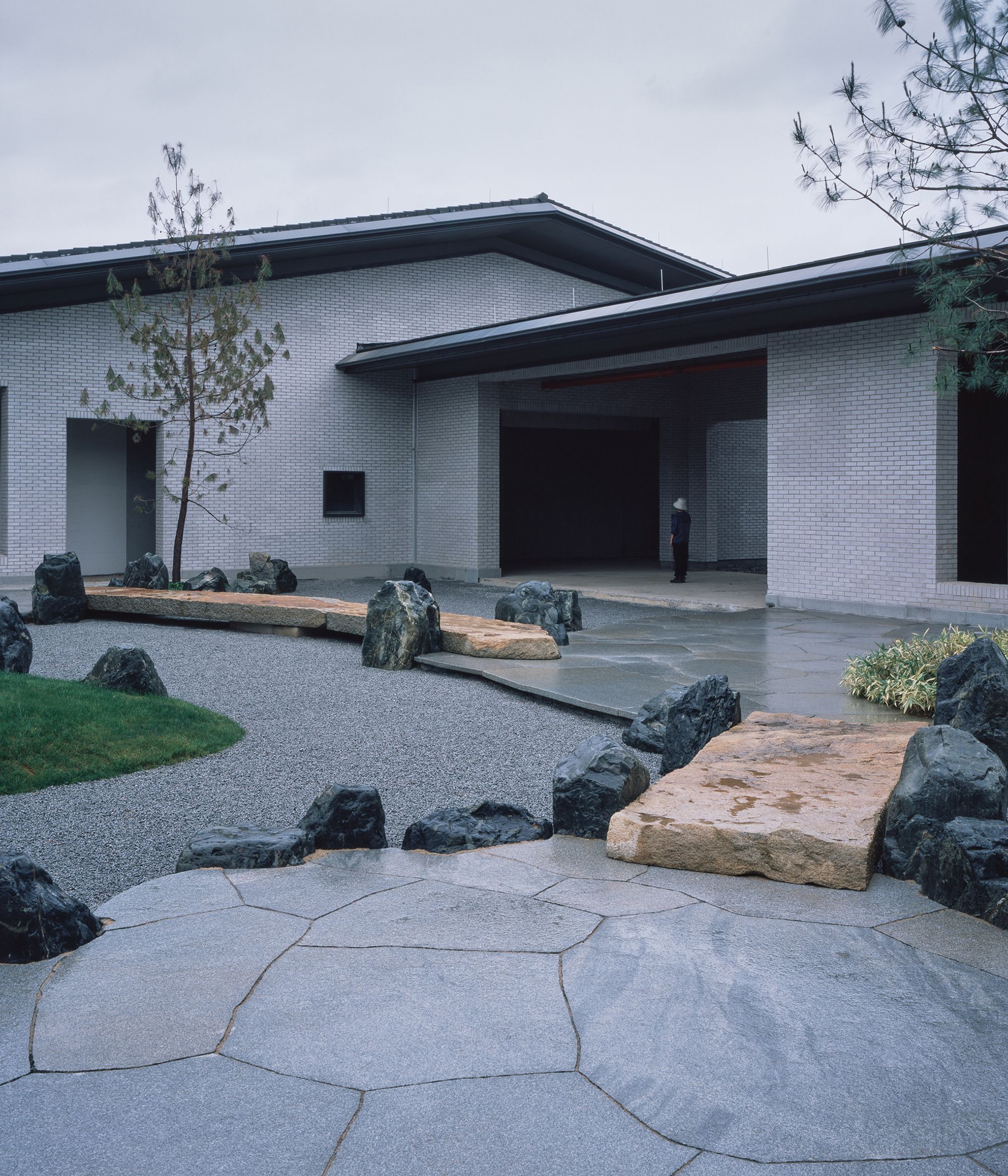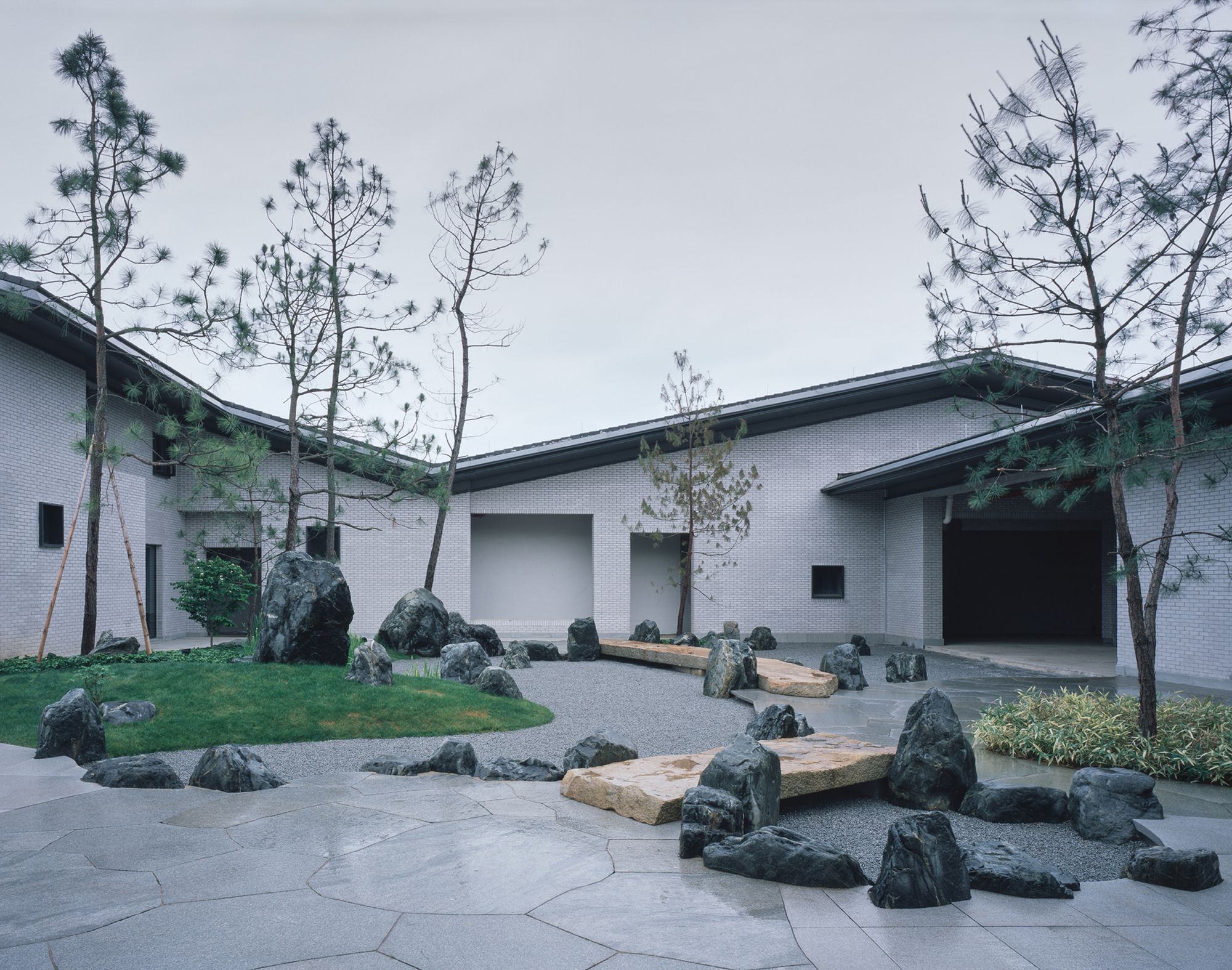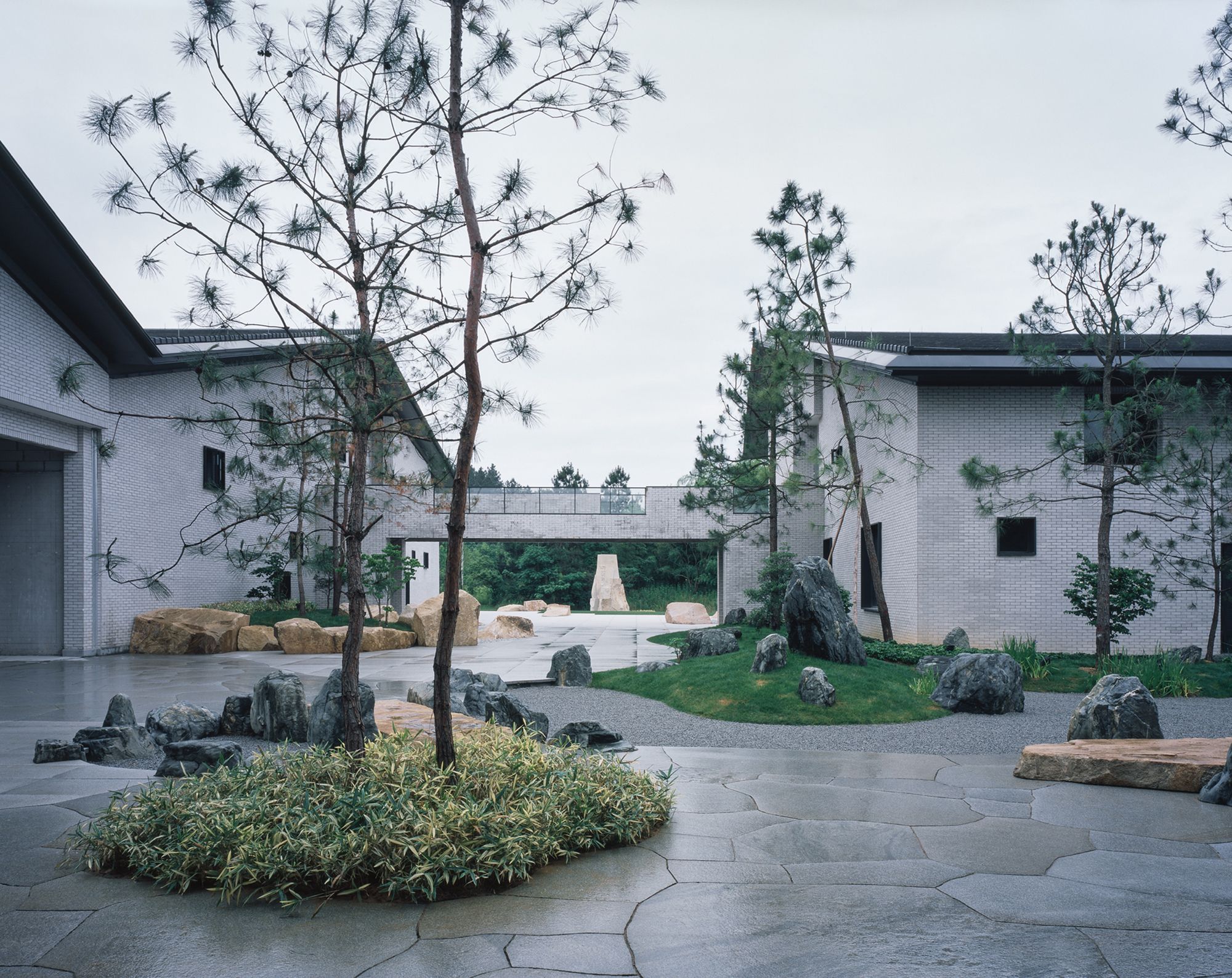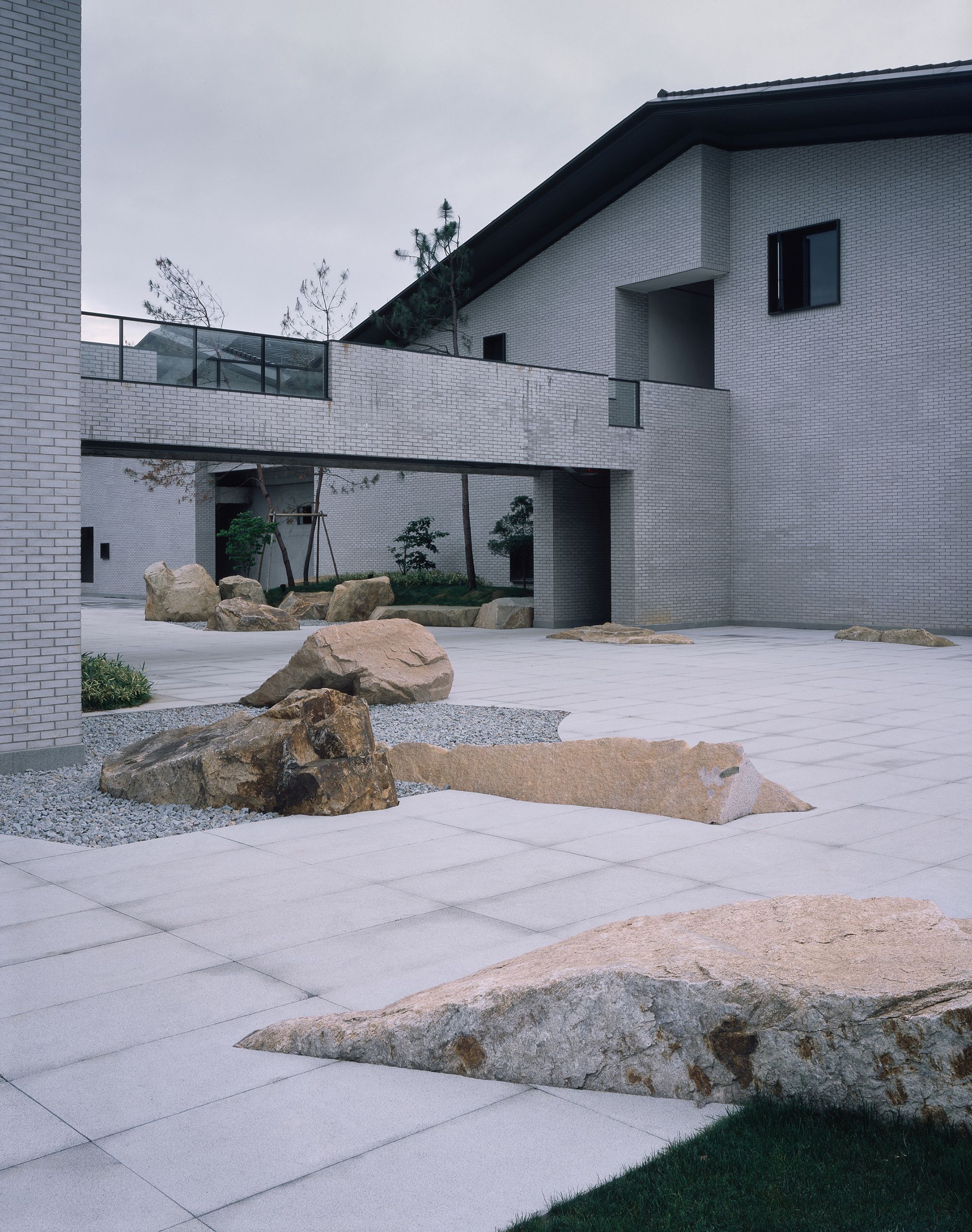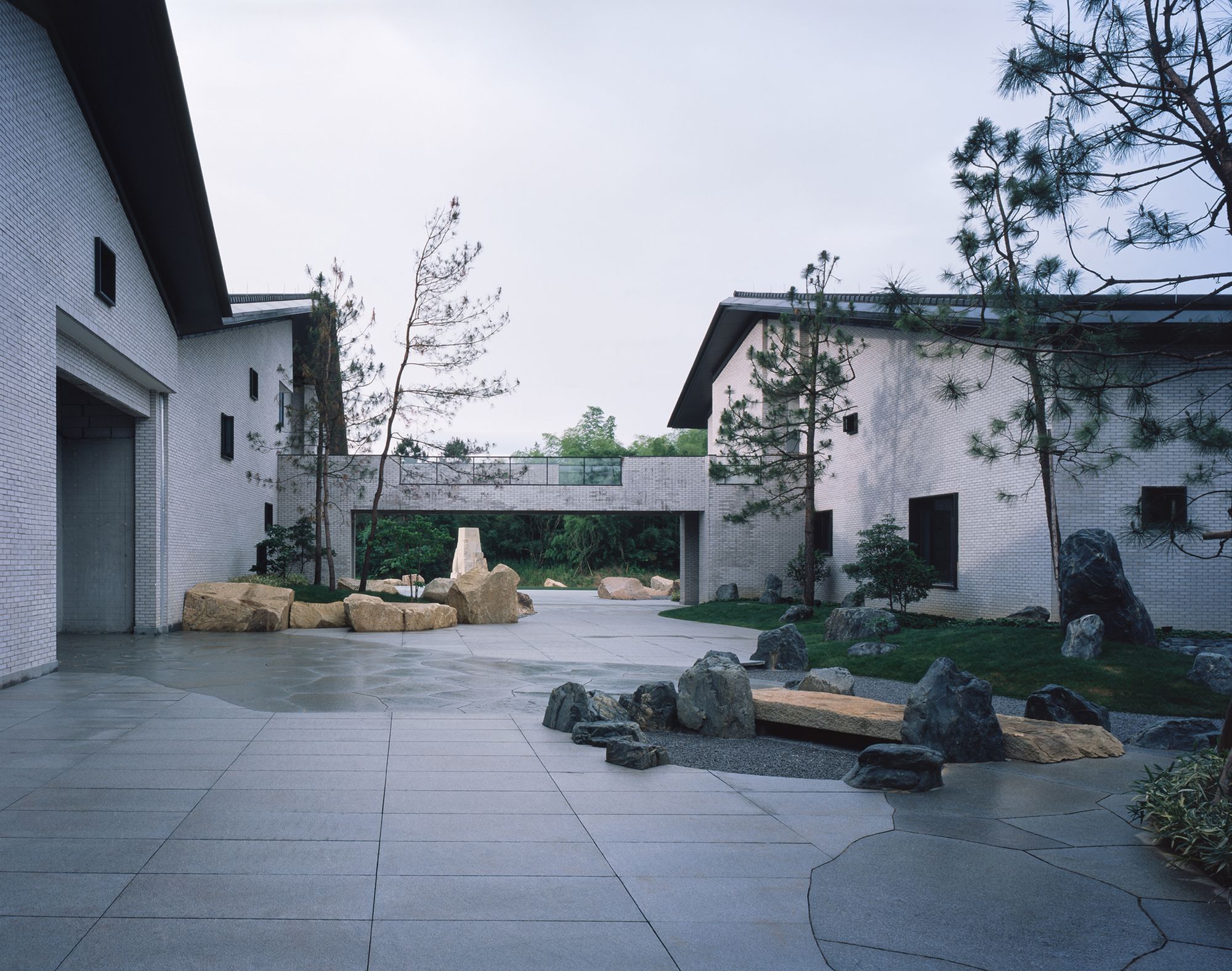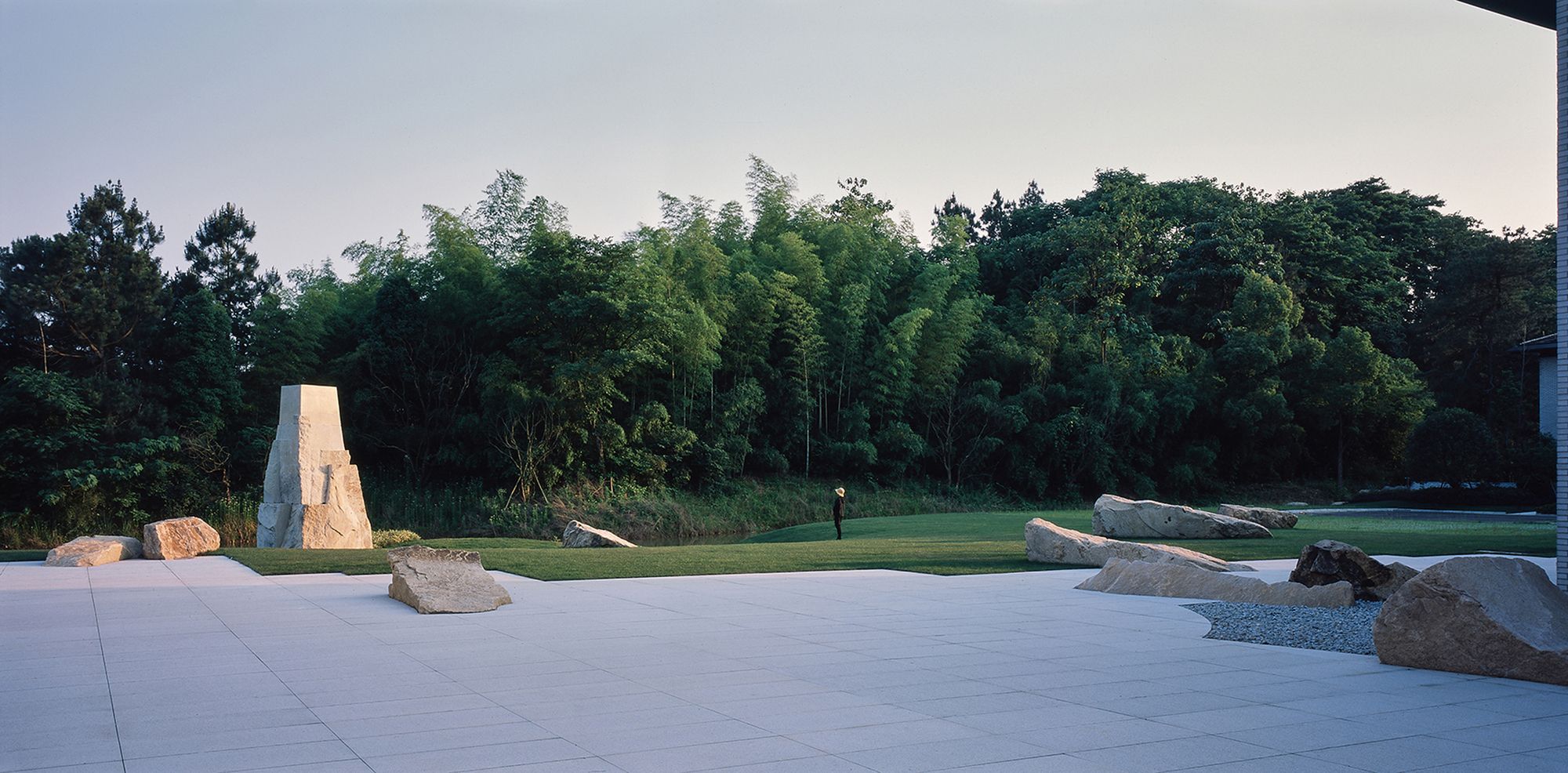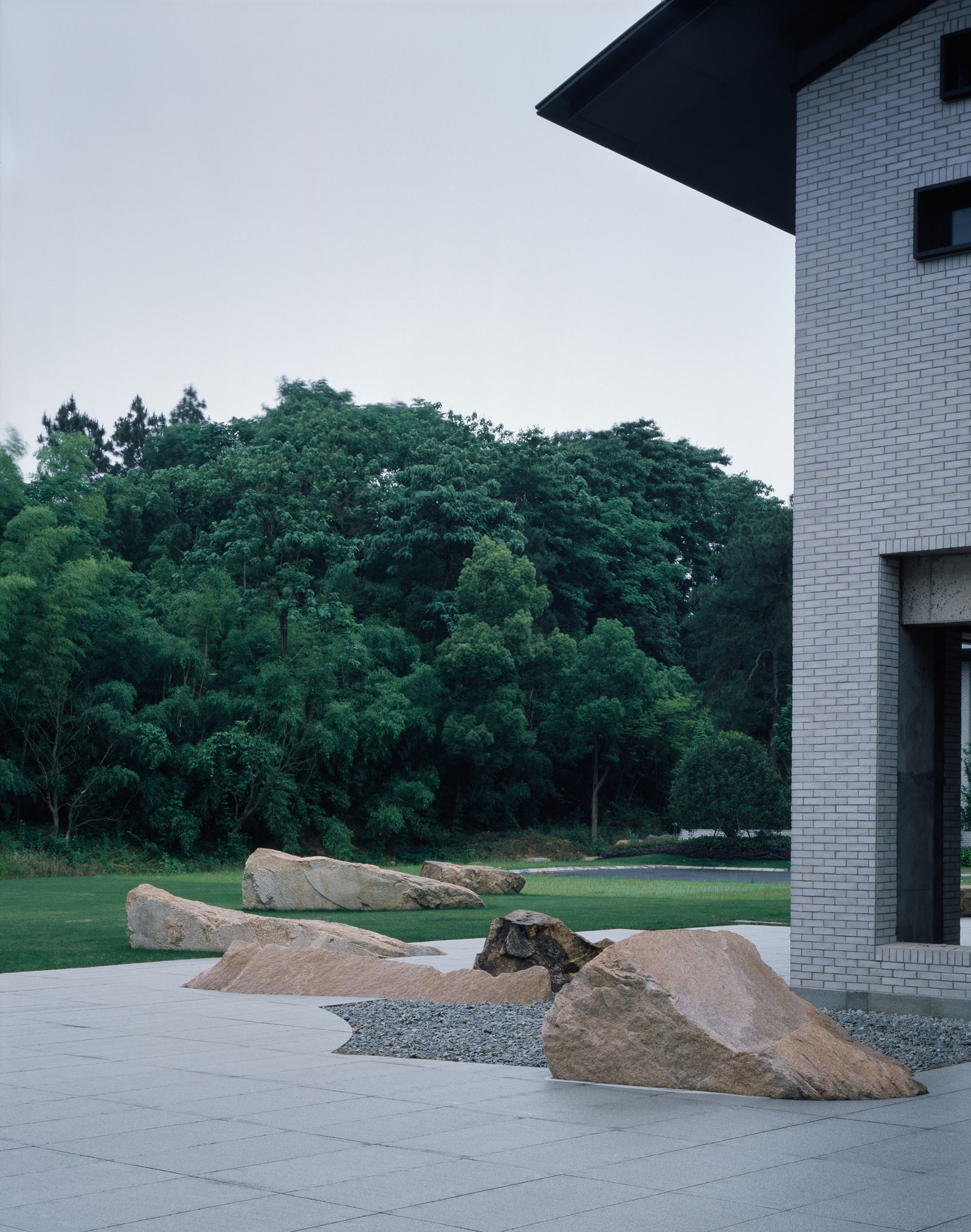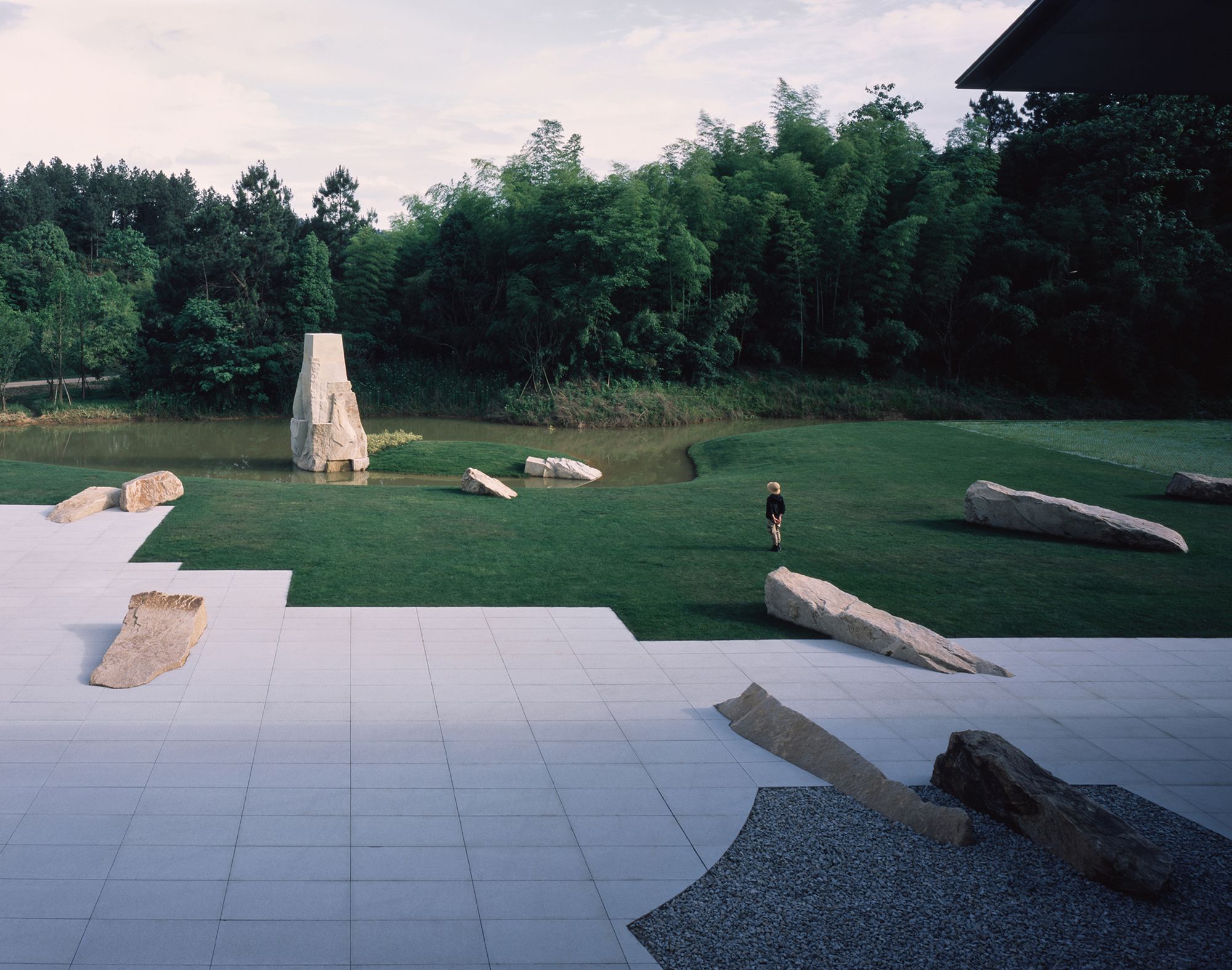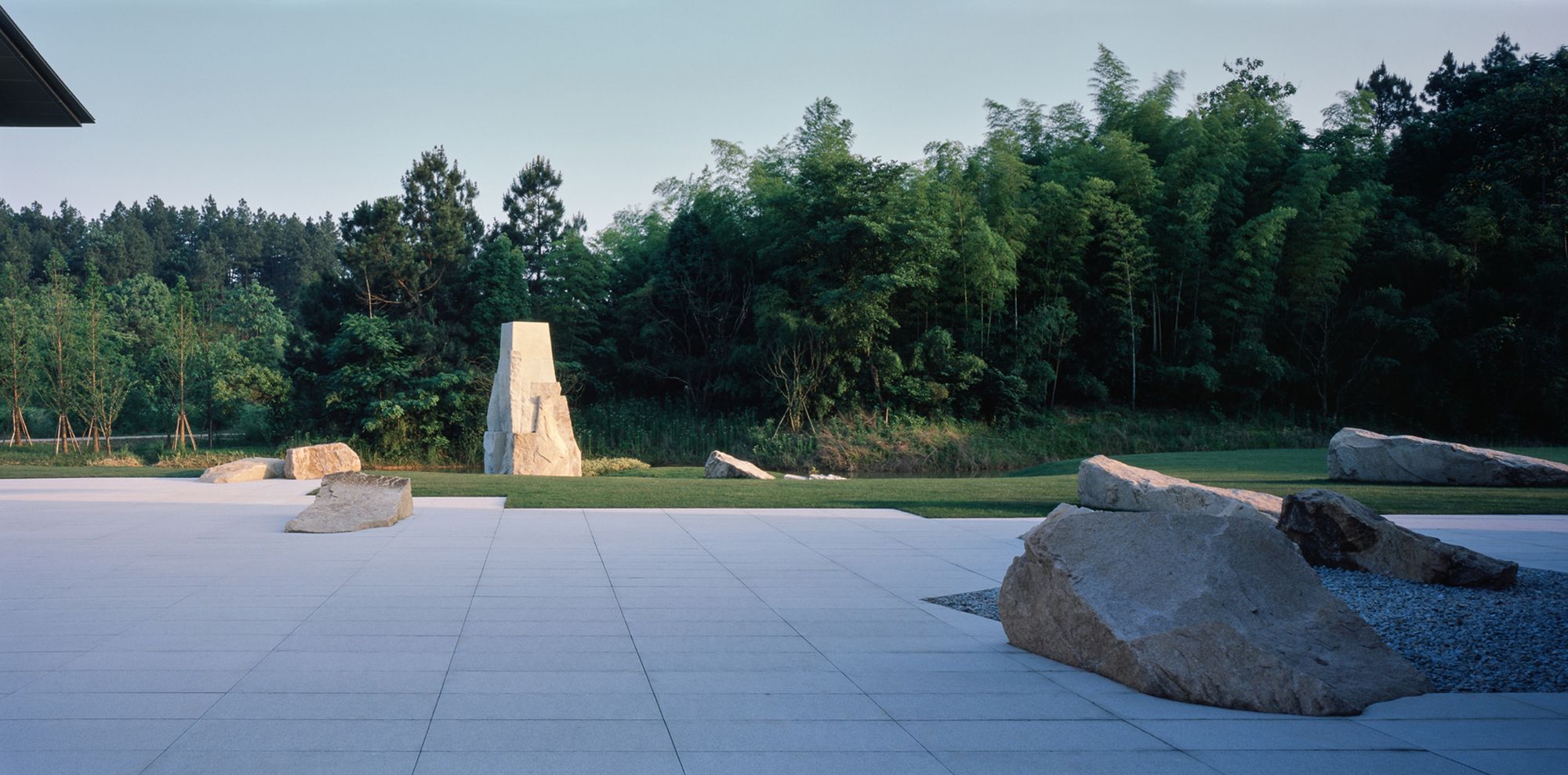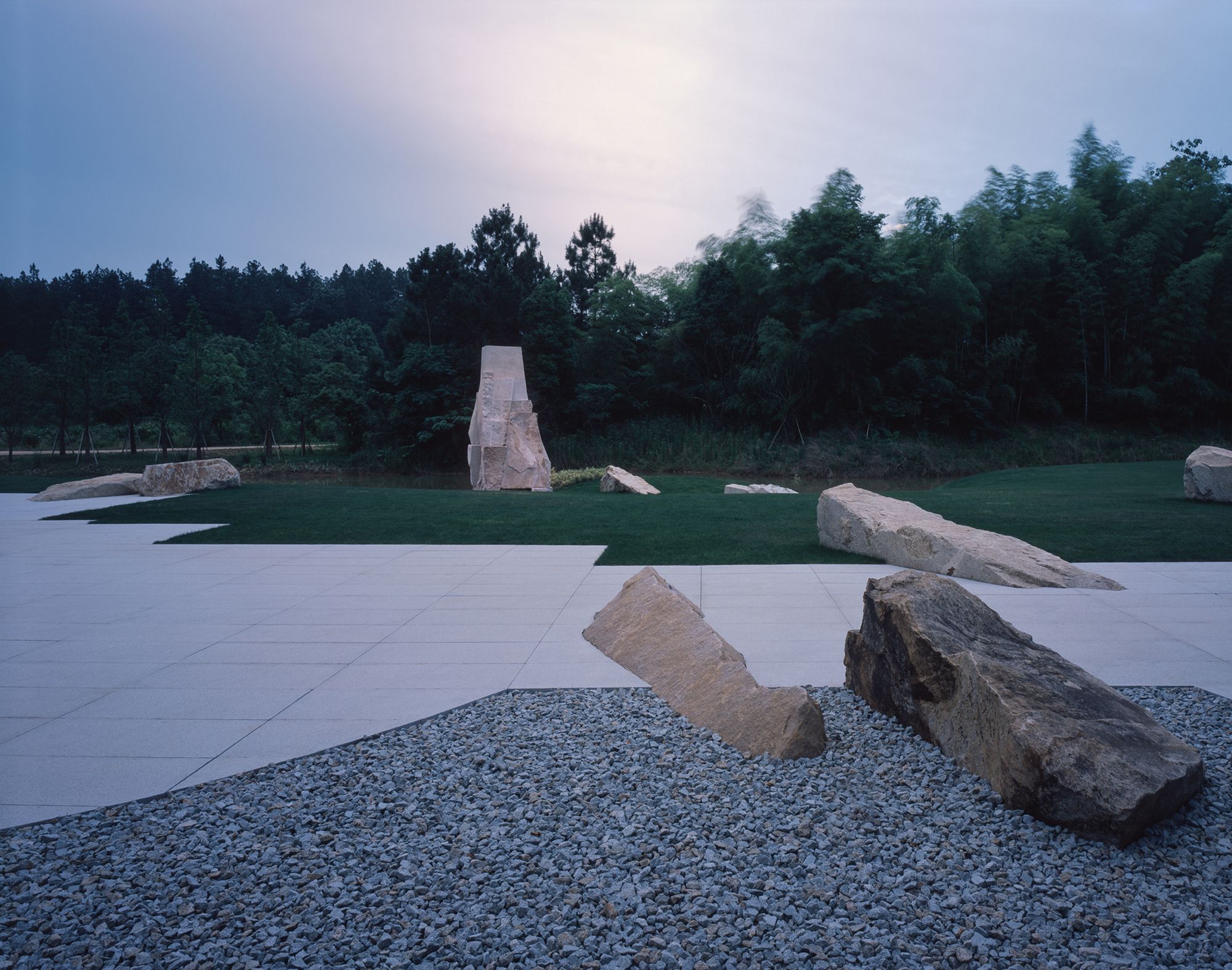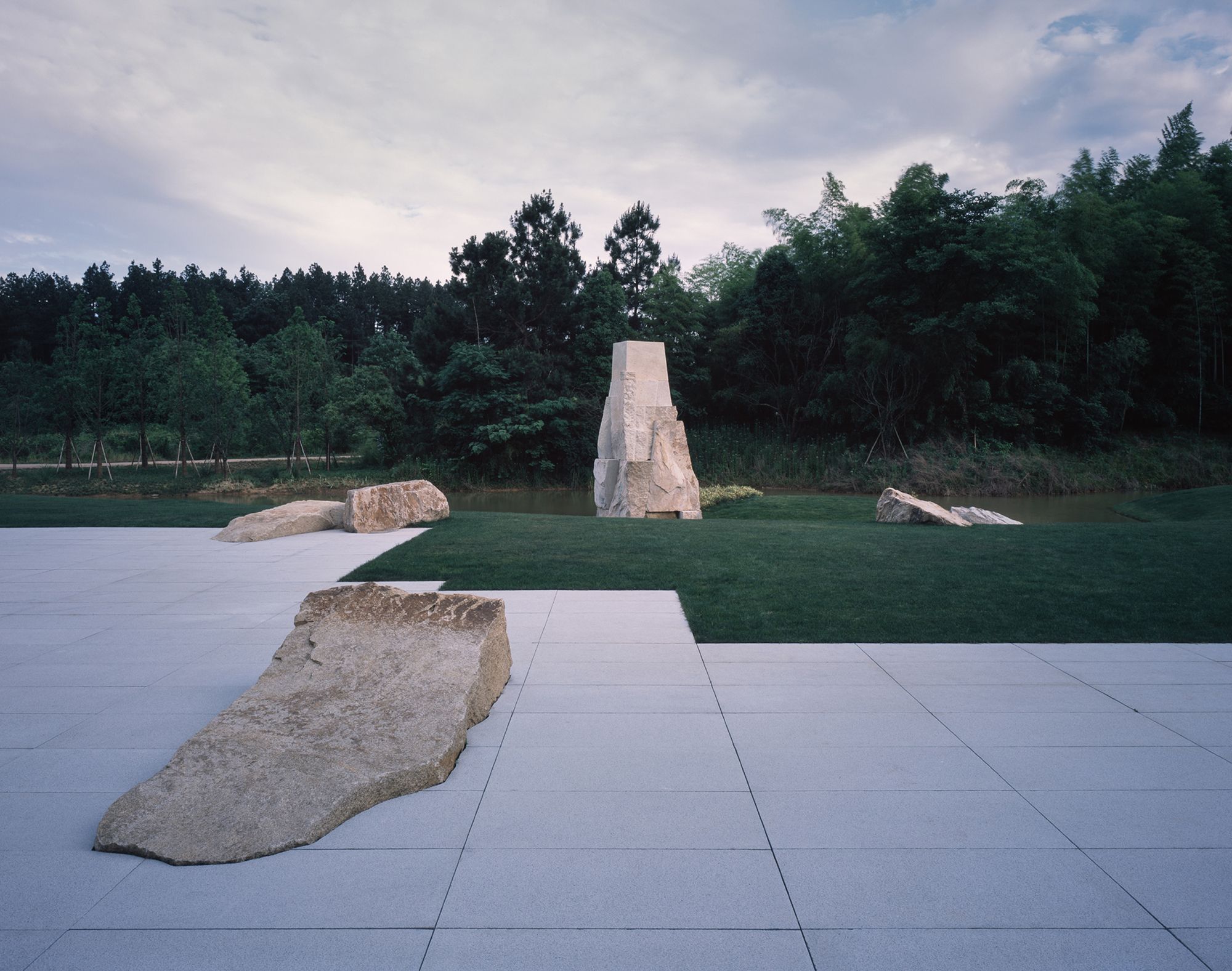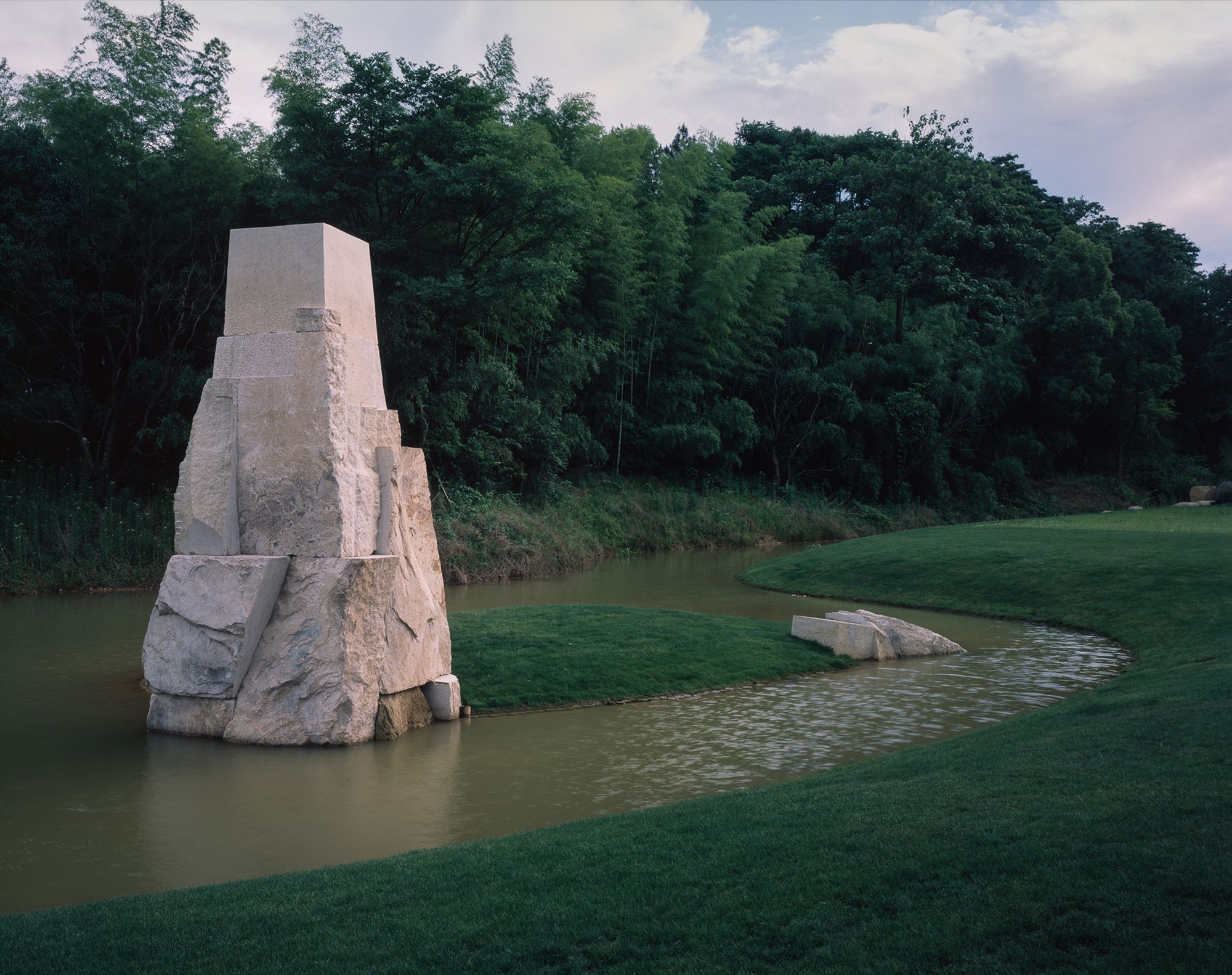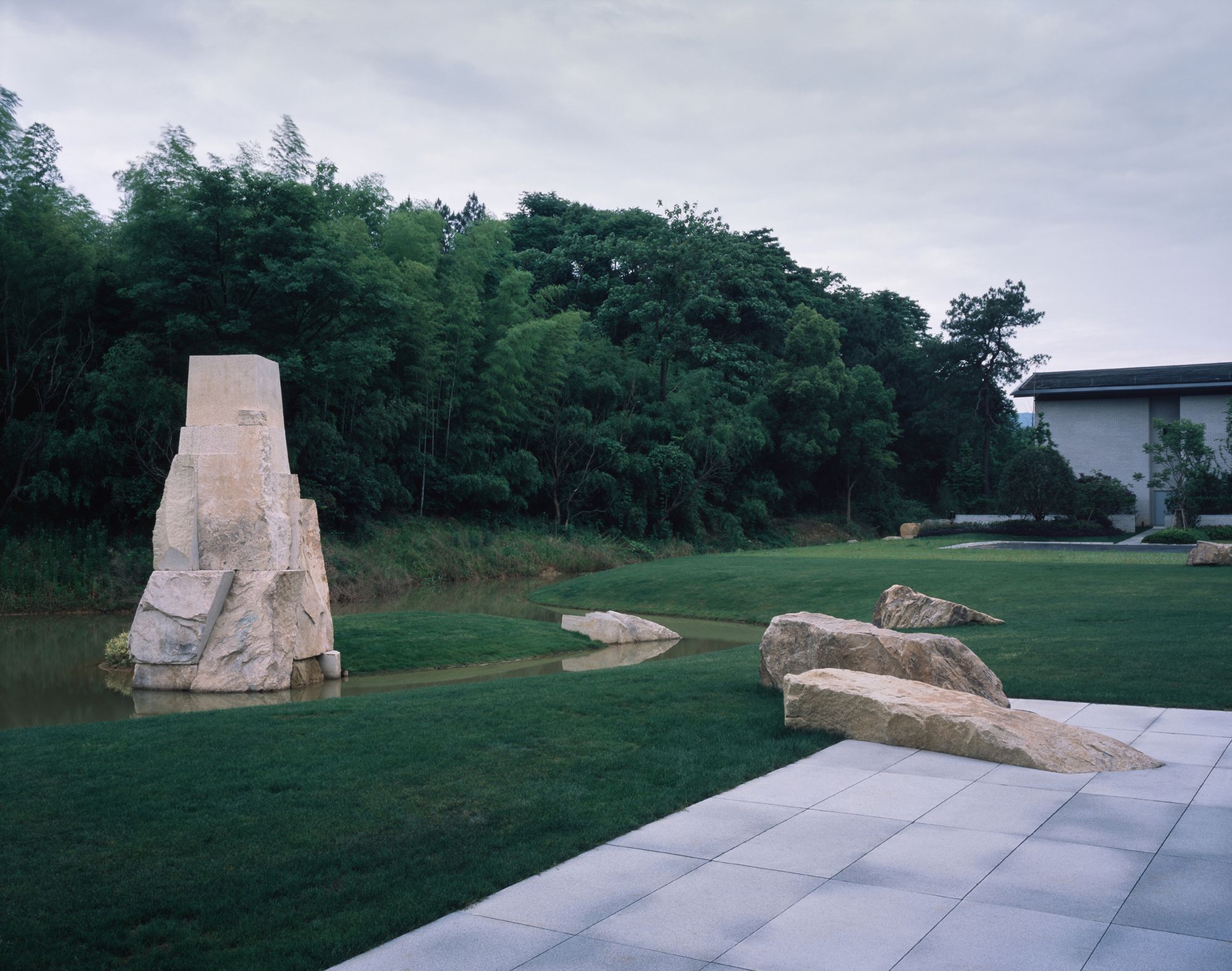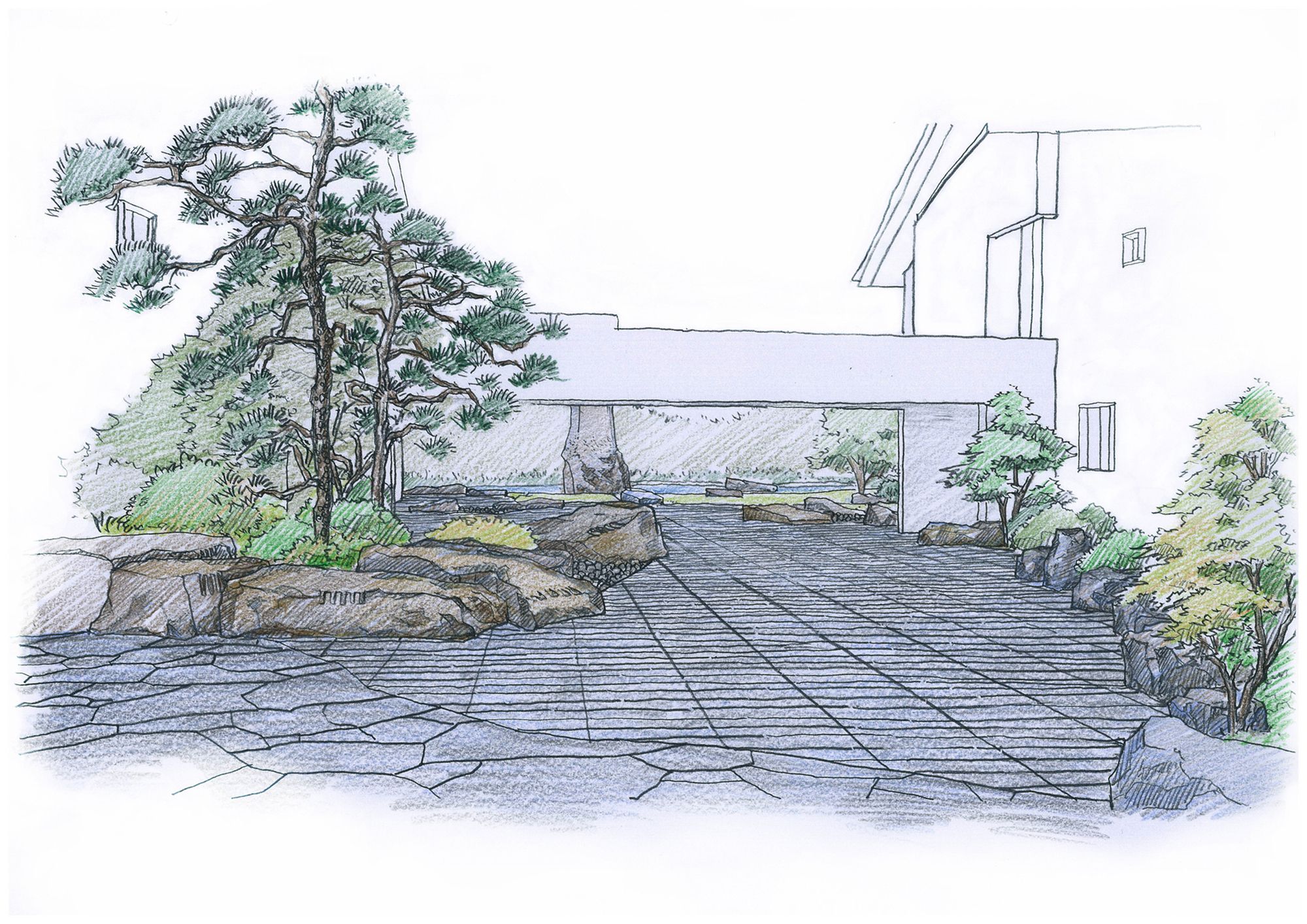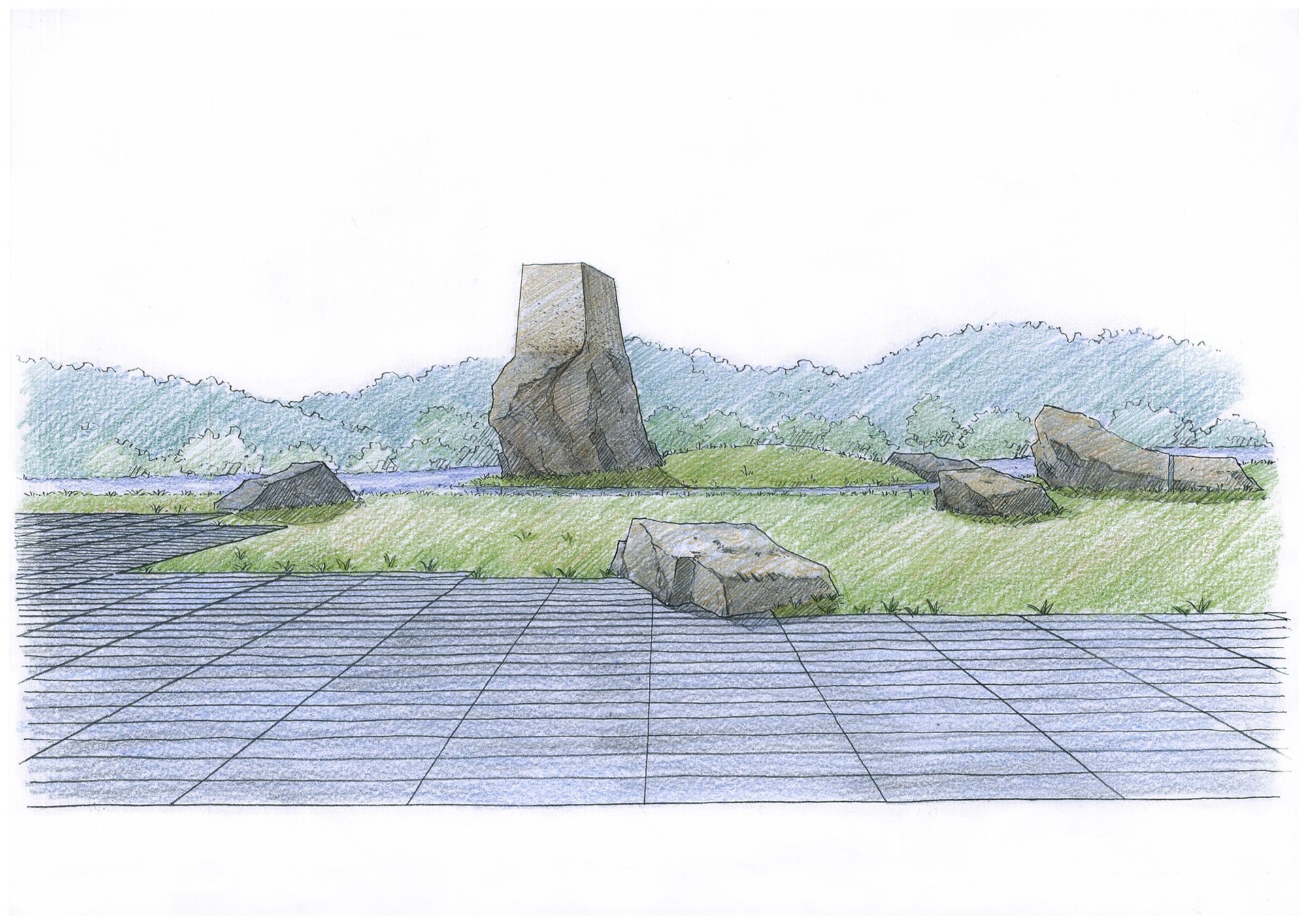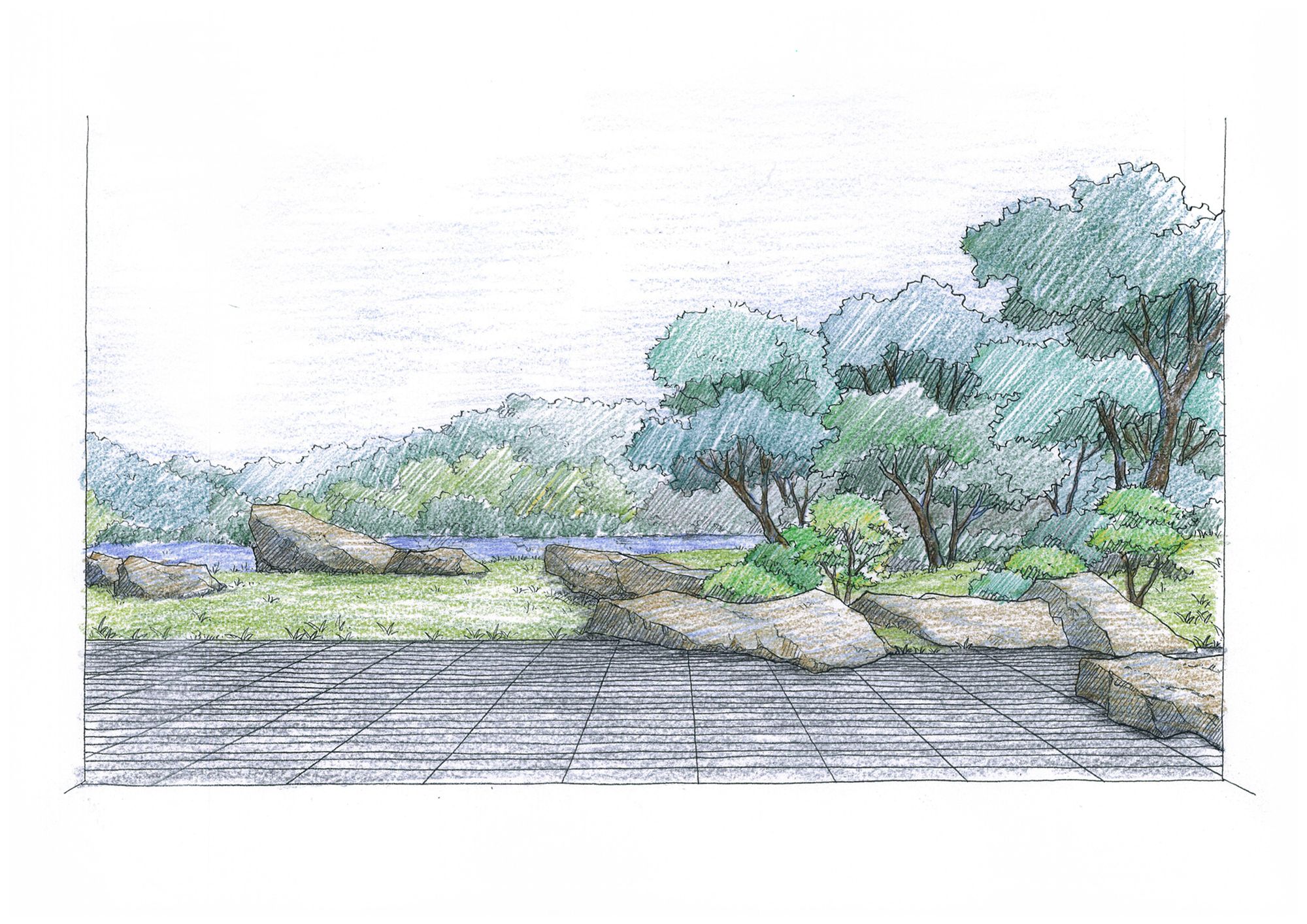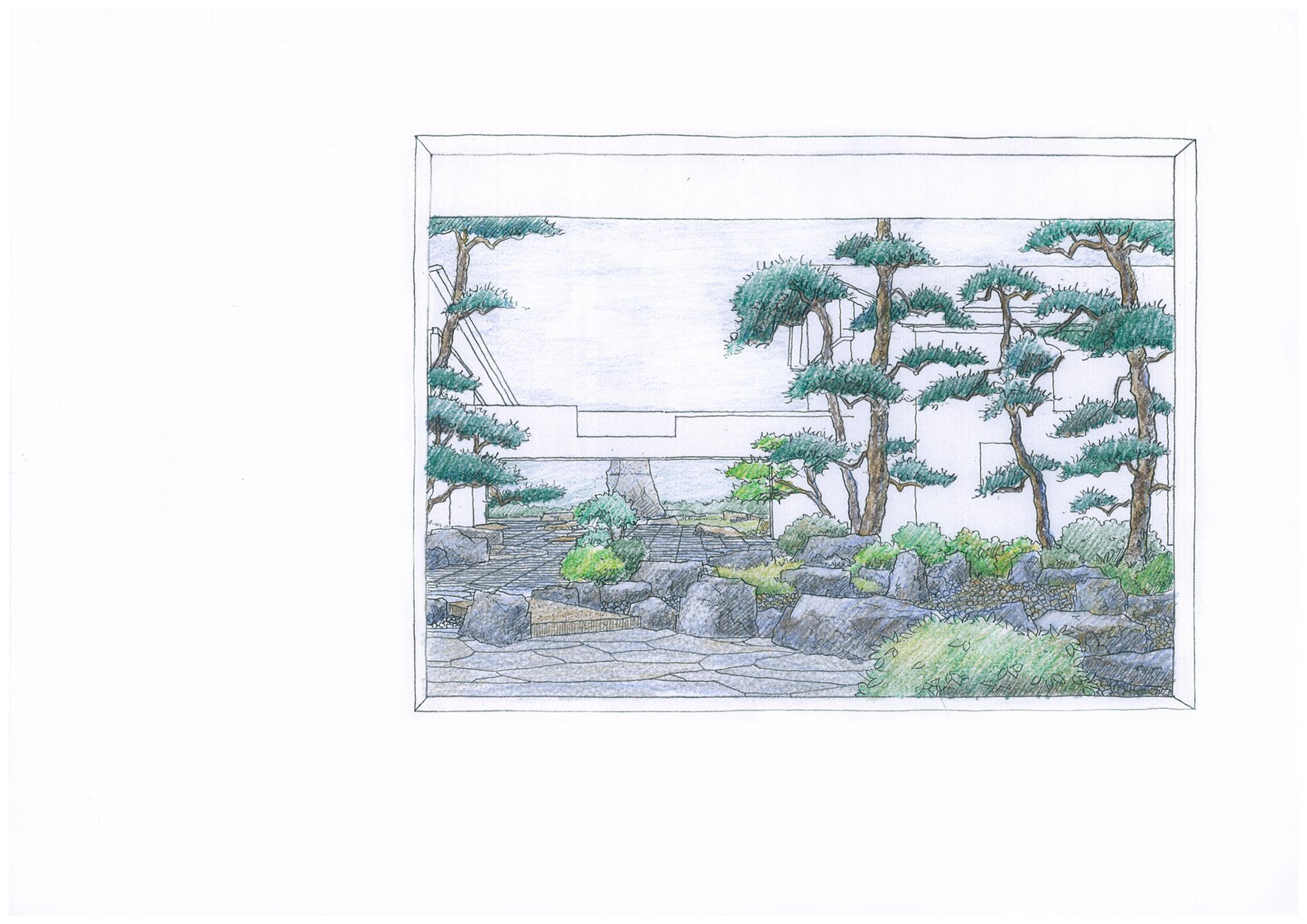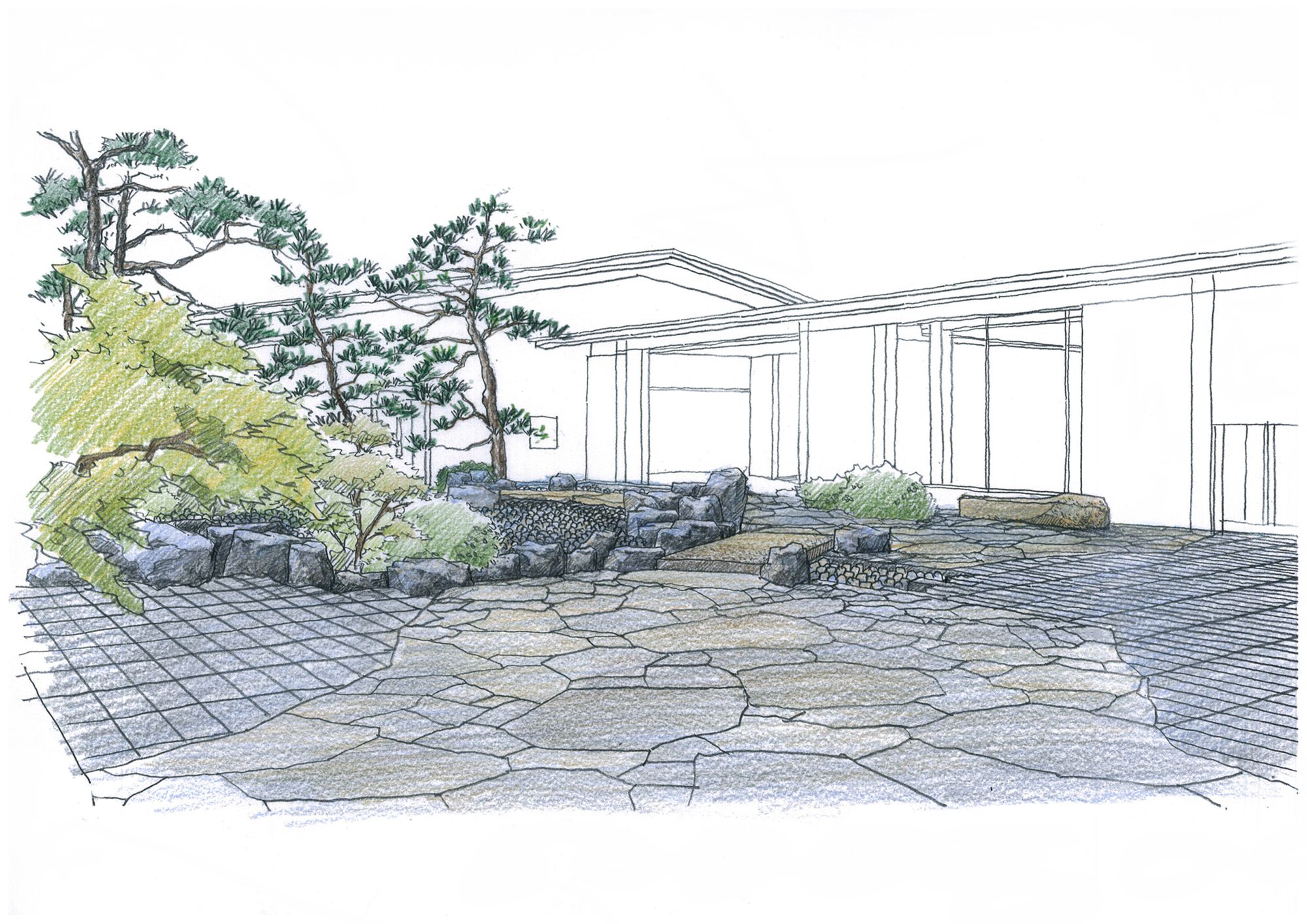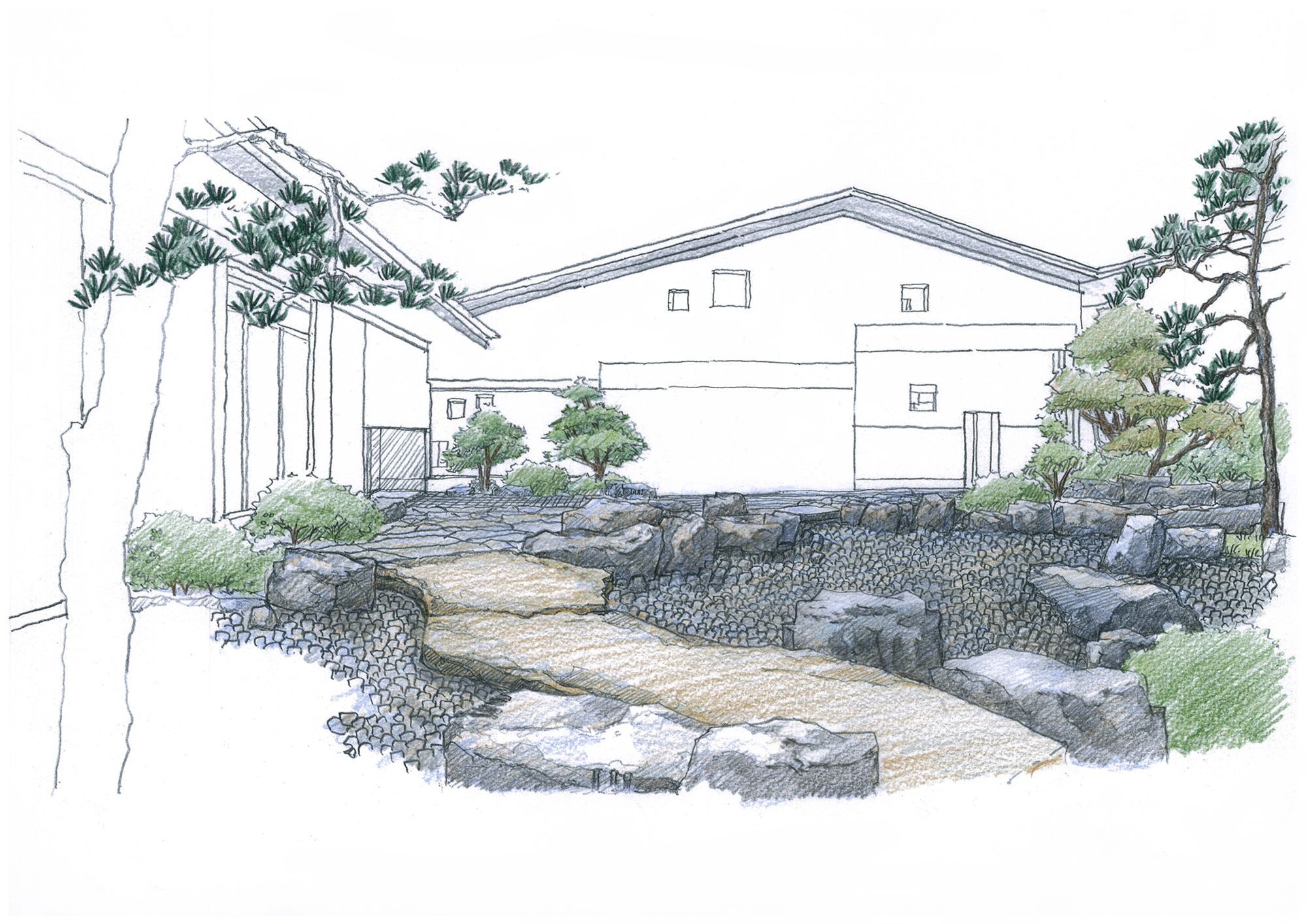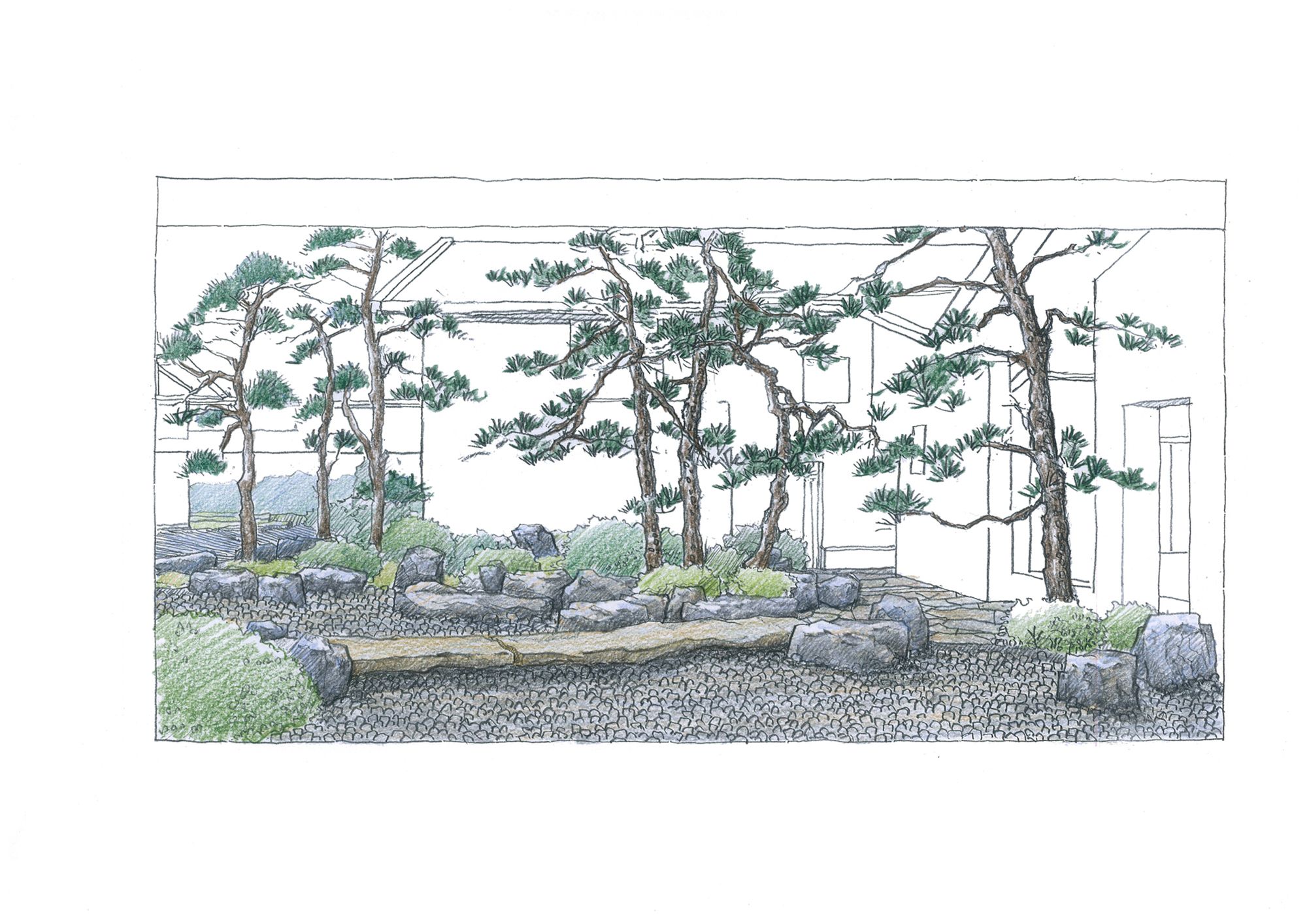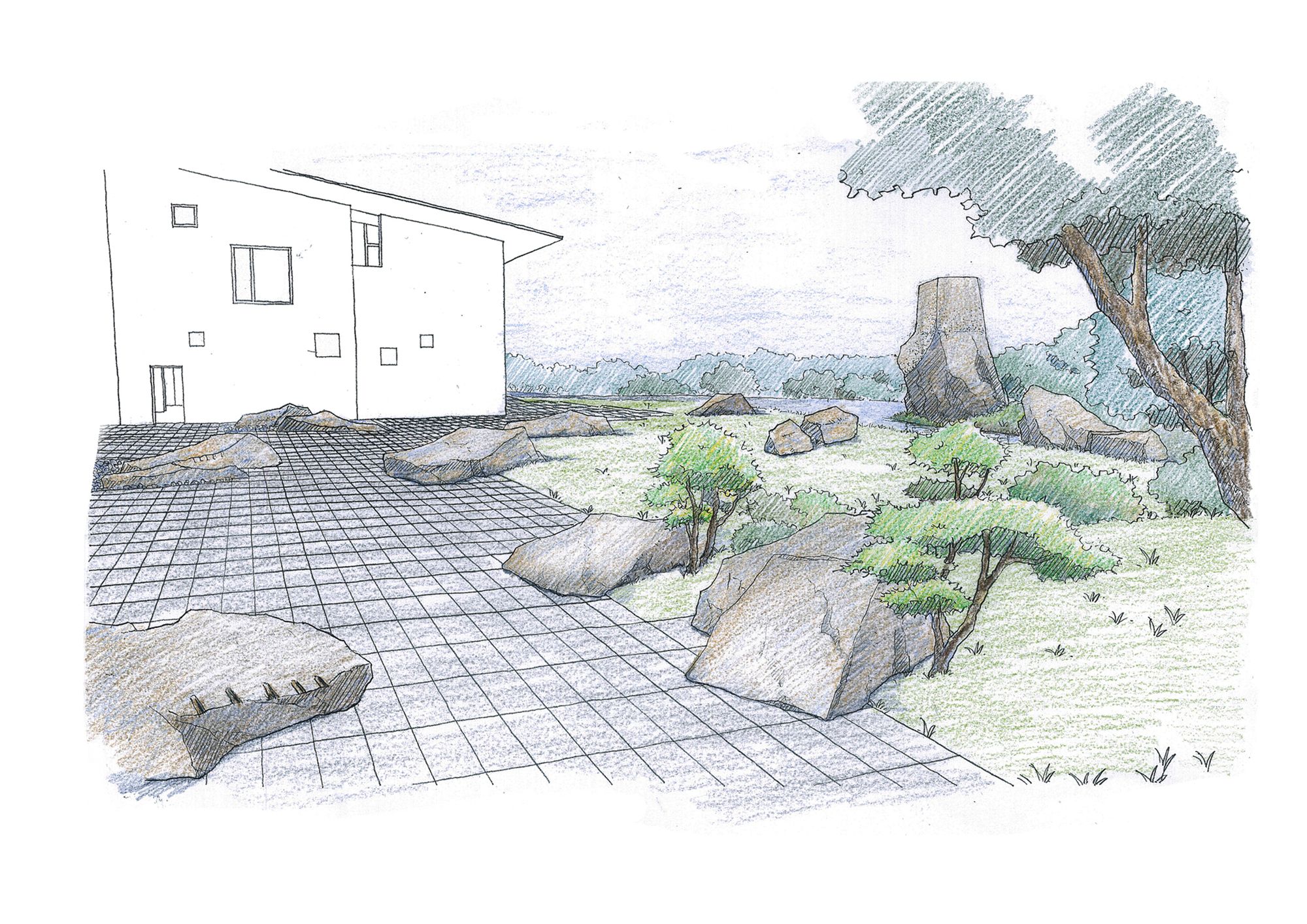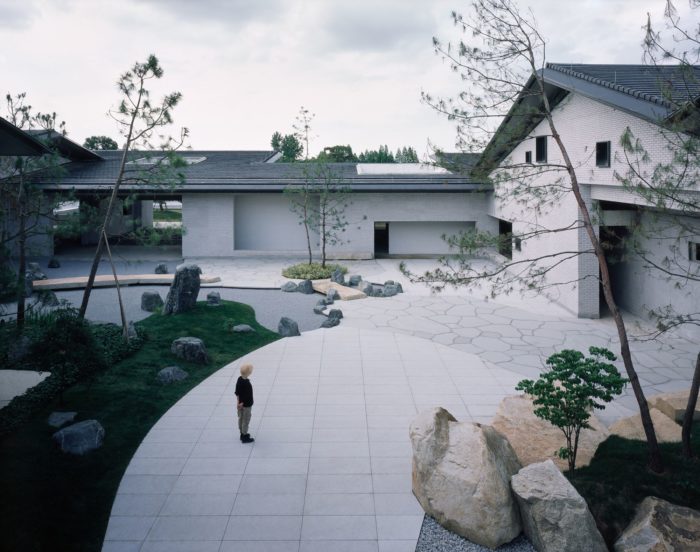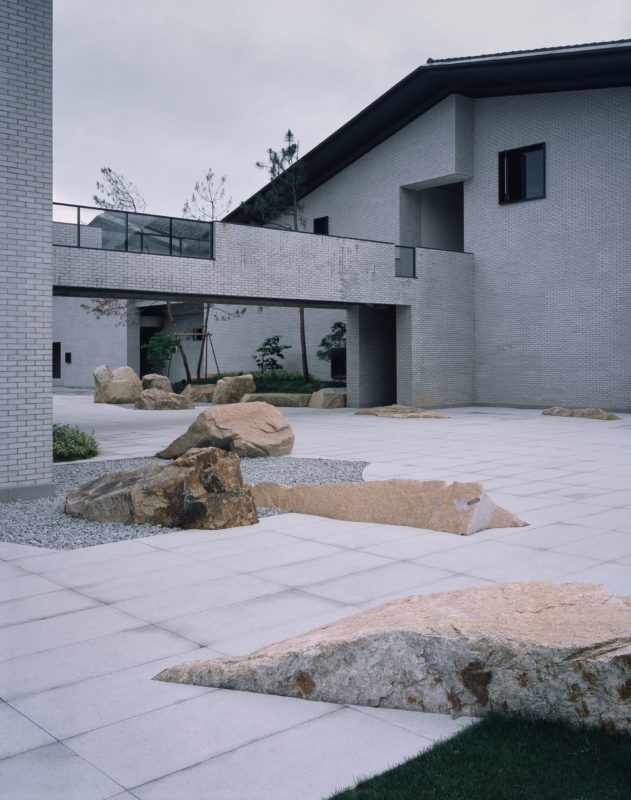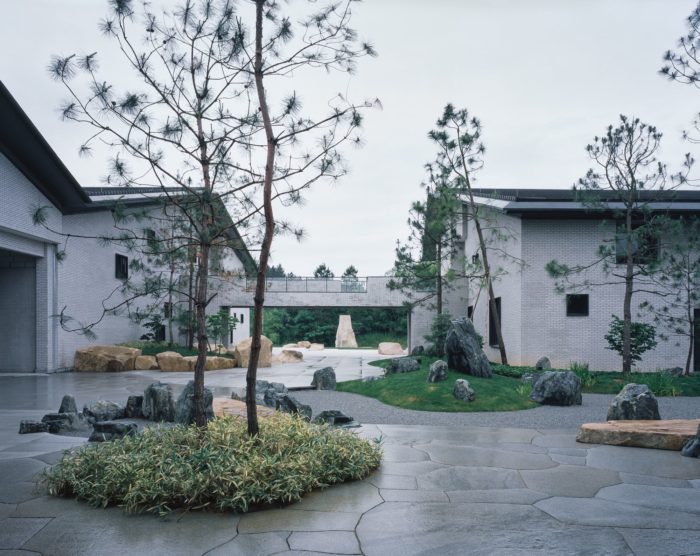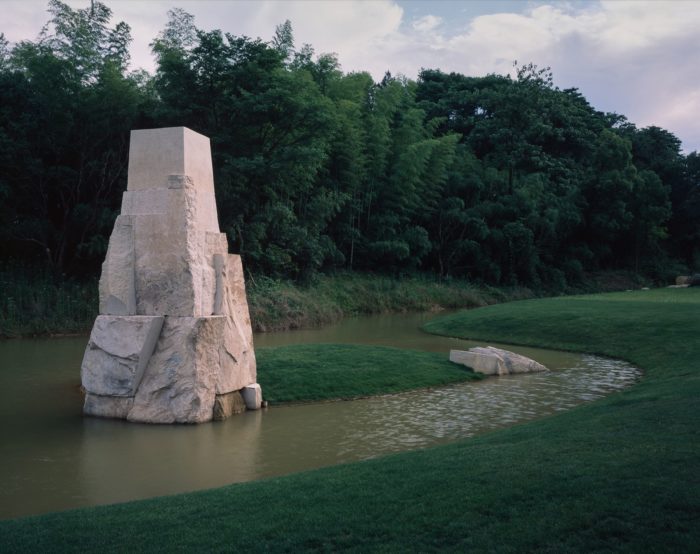Passage of Time Garden
Passage of Time Garden is located within Anji Archaeology Museum, which sits near Anji Ancient City Ruins and Longshan Yueguo Noble Tombs. Within this design, we strive to balance the relationship between natural and man-made. The site spans from the museum all the way to the surrounding mountainous landscape filled with wildlife. Yet the ambience of the garden takes on an opposite approach with the museum area being more natural and the natural area more man-made. The design follows the museum tour route which is characterized by long hallways that connect different exhibition halls and separate the garden into inner and outer garden. The design language of the exhibition area uses natural forms that are complex and present a very clear object imagery. Then gradually transitions to the outer garden where abstract, man-made elements can be seen.
Inner Garden
The main entrance of the museum is located at the south, an area characterized by gray walls corresponding with the inner garden mainly for viewing purposes. We hope the tourists can pause at the entrance for a brief moment, being attracted by the still scenery that can only be viewed from distance. At the same time printing that image onto the back of the head, setting the tone for rest of the garden. The inner garden viewed from the entrance is framed by towering walls of the several exhibition halls from the side, while the ceiling of the entrance hall creates the top boundary. Few tall evergreens rises from the ground, creating a scene that resembles “Fishing Village in Autumn” by renowned Yuan Dynasty painter Ni Zan.
The vertical space supported by the few evergreens extends into the distance; the branches are not constricted in anyway for shape molding, carelessly moving freely in the air. The buildings softened by the vegetation looms in the background. The inner garden uses stones as foundation, evergreens as pillars, and stone bridges for bridgeways along with different paving patterns and surface textures, creating many different sensory experiences. The stone bridge in the middle represents the “flow” from one space to the next, creating a constrast from the vertical elements and extending one’s perspective. Together with dry creek, tall pines, and viewing stones, the inner garden creates a calm and peaceful image resembling tall mountains and running rivers when viewed from the entrance.
The pines used in the inner garden are all harvested from the local mountains, irregular in nature and void of any human intervention. The vertical characteristic of local pines was an important aspect during plant selection process.
Passageway
Continuing from the entrace entering the corridor, visitors will enter the next scene where the buildings are no longer the backdrop, instead, the outer garden surrounded by natural areas comes into view where the yellow rust stone sculpture becomes the dominant vertcial element around 80 meters away. The sculpture will guide the visitors to meander into the garden while elevating the style of the garden.
As visitors strolls from the inner garden into the outer garden, the stones transition from smooth-surfaced river stones to mountain stones with crack lines across the surface. Accompained by tall pines on either side, the passageway between the two gardens give vistors the feel of hiking a tall mountain from the river. Although the surface of the mountain stones is rich in crack lines, they point towards the same direction and a rhythm appears, subtly guiding the visitors towards the outer garden. The design language transitions from natural to geometric/man-made, creating an independent and unique space called “Dong Tian”. Visitors will deeply experience the constrictive, oppressive, yet enlightening sensation created from the building, trees, and stones.
Outer Garden
Exiting the passageway, the view expands horizontally as the buildings no longer frame the perspective, giving the visitors the feeling of reaching the mountain top. On the grass meadow, 13 large granites are guided by visitors’ visions and points towards the only focal point and spiritual center of the outer garden, a 6.3 meters tall yellow rust stone sculpture.
The sculpture is composed of many smaller pieces of yellow rust stone with different finishes, also displaying a transition from natural to man-made. At the bottom are more natural finishes like cracked surface and natural surface. Towards the top are man-made finishes like point-chisel surface and polished surface. As a single entity, the sculpture allows visitors to reflect on the insignificance of human compared to the sculpture, and also the insignificance of the sculpture compared to nature, thus creating a spiritual connection between human and nature. When viewed from afar, the sculpture and the island it sits on top become a part of the natural scenery, looming in the bamboo forest, signifying man-made landscapes regress towards nature.
The change in horizontal and vertical perspectives is also an important aspect to considering in the space of the landscape. From the ground level, surface textures, relationships between foreground and background, artificial techniques, and the sense of volume are prioritized. The elevated corridor provides different perspectives from a higher elevation. Details becomes less important as field of view and depth of view increases. The relationship between the sculpture and the surrounding landscape becomes clearer as well. We have redesigned the flow pattern and the riparian edge of the water at the outer garden, to better assimilate the sculpture into the landscape, allowing it to become the sculpture within the space, the landscape within the space.
Passage of Time garden intents to display the communication between the complexity of nature and simpleness of geometry, completing the cycle from object image to artificial, spritual to natural and back.
Project Info:
Landscape Architects: July Cooperative Company
Location: Huzhou, China
Area: 6000 m²
Project Year: 2020
Photographs: Hao Chen
